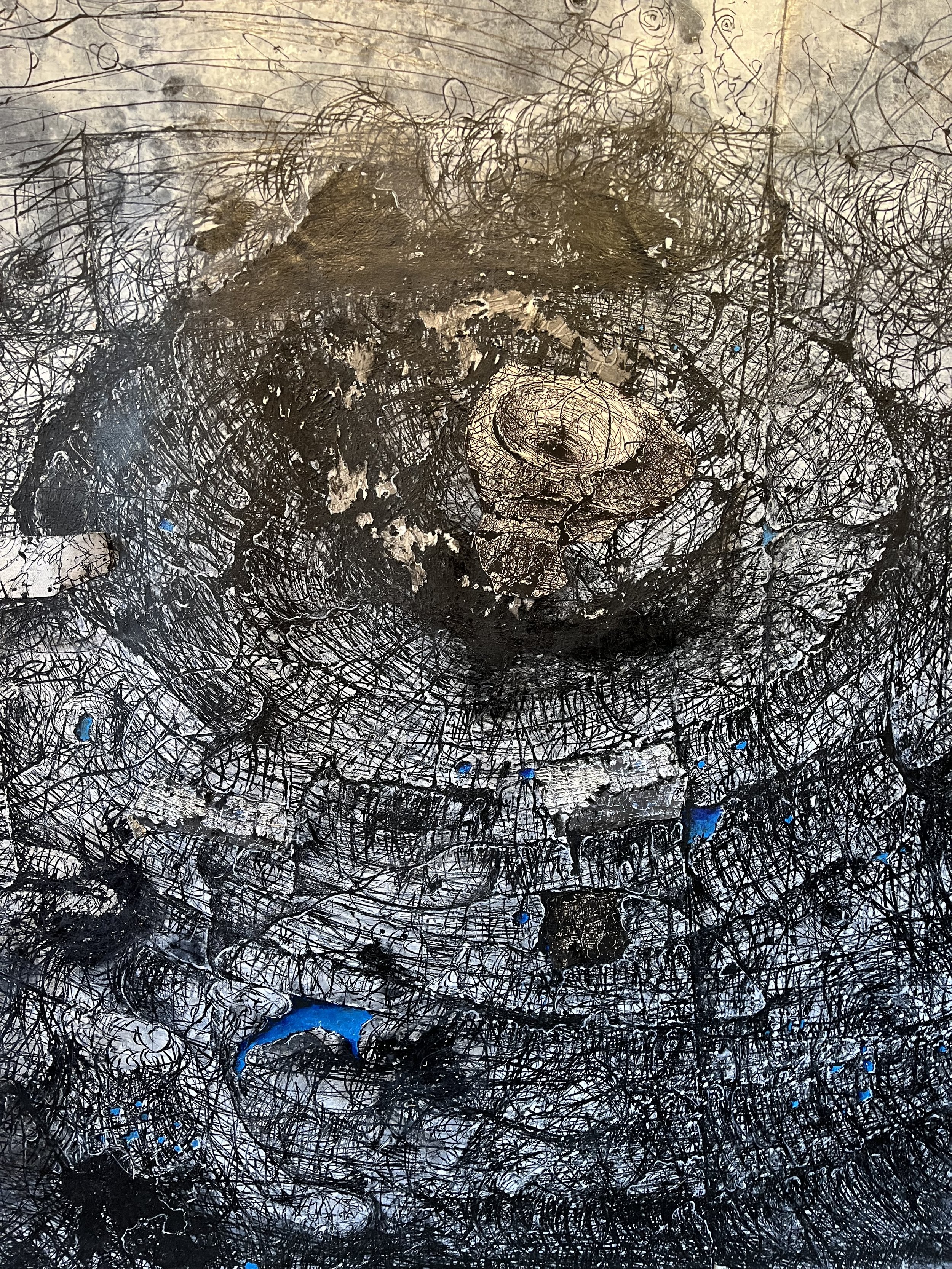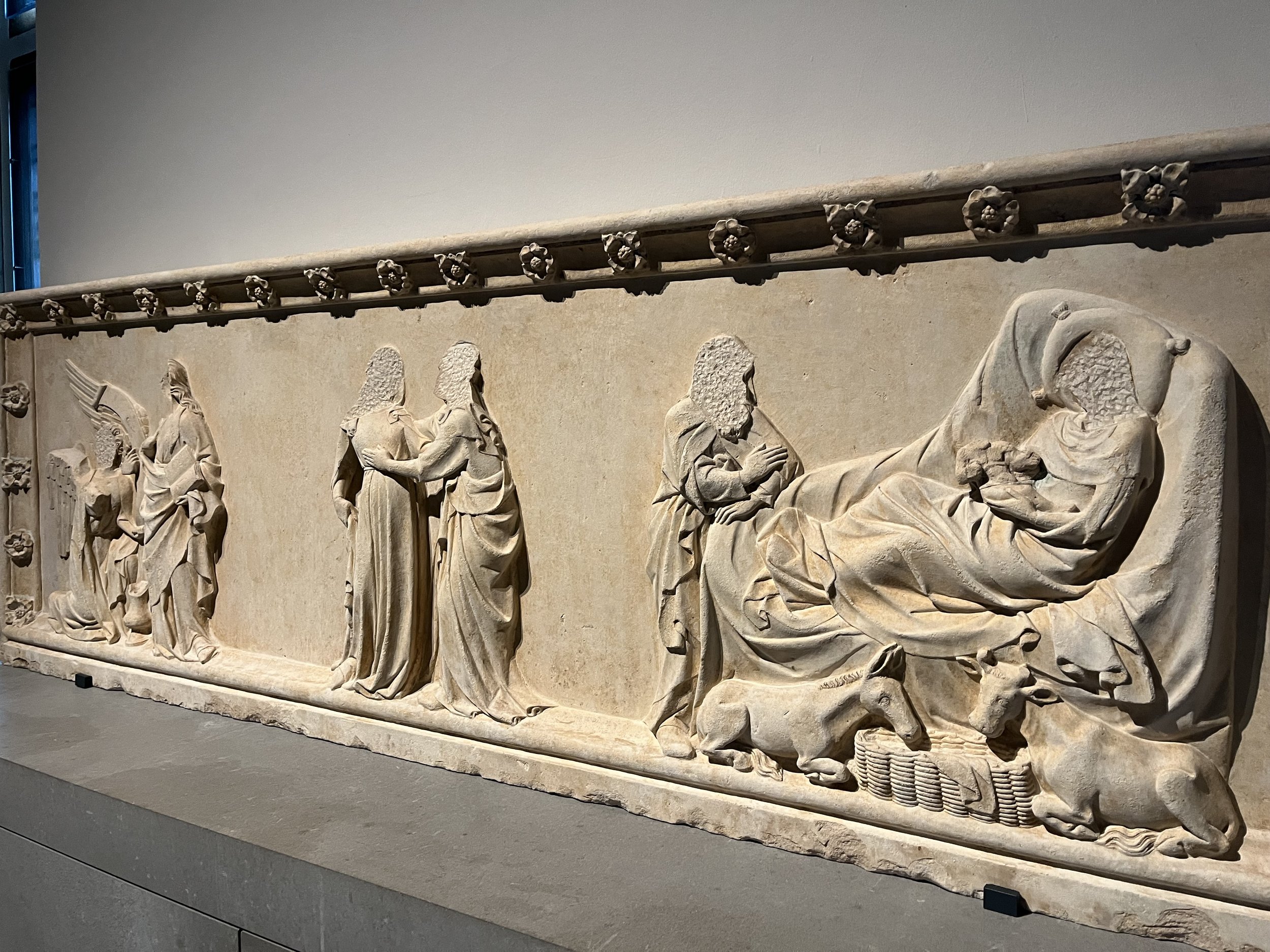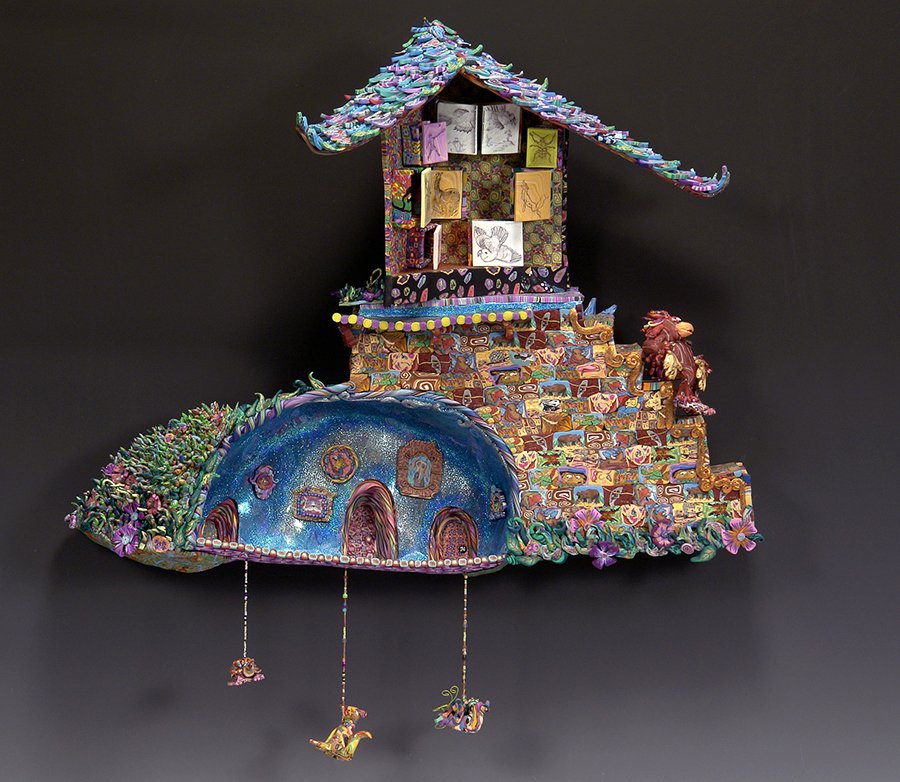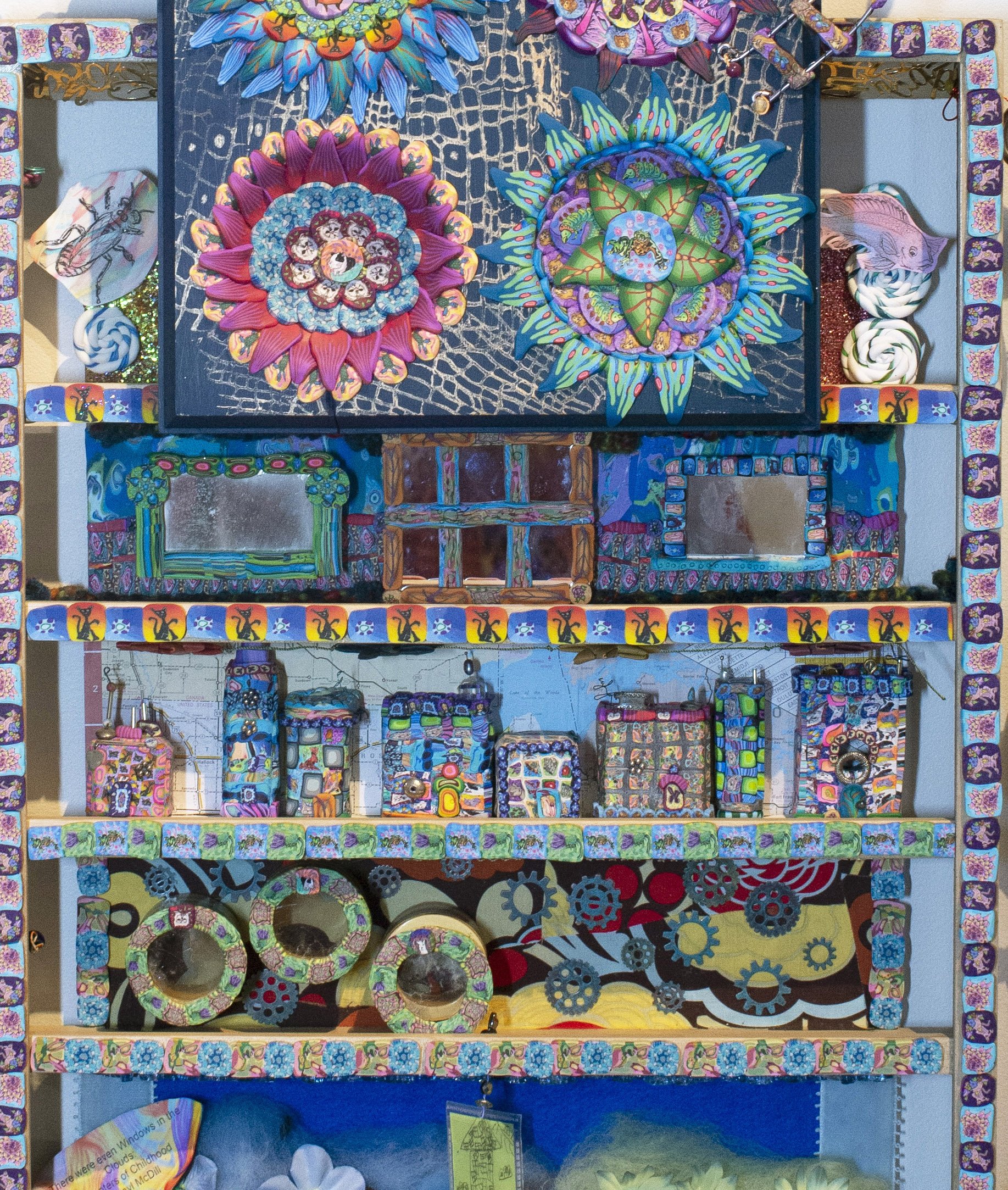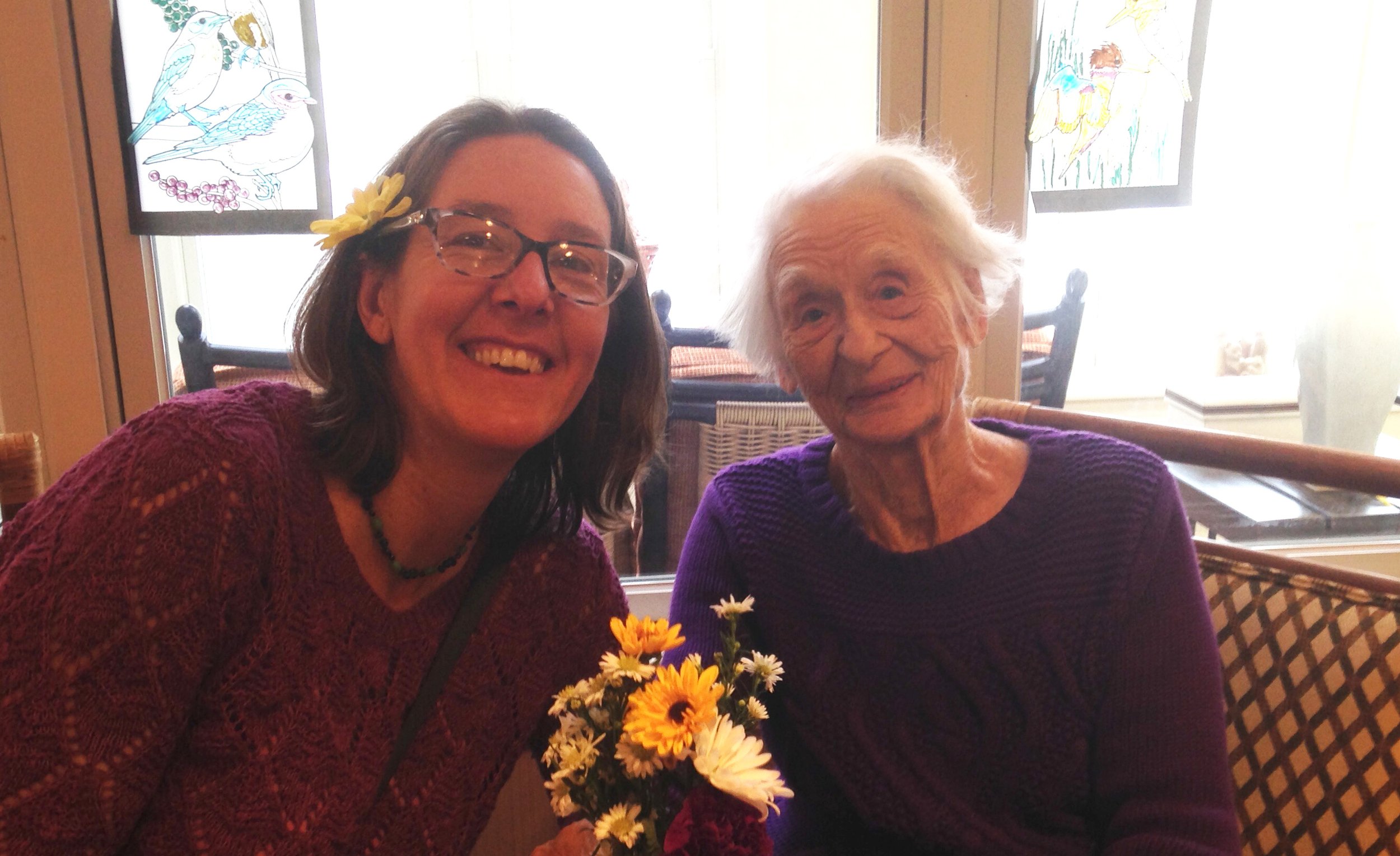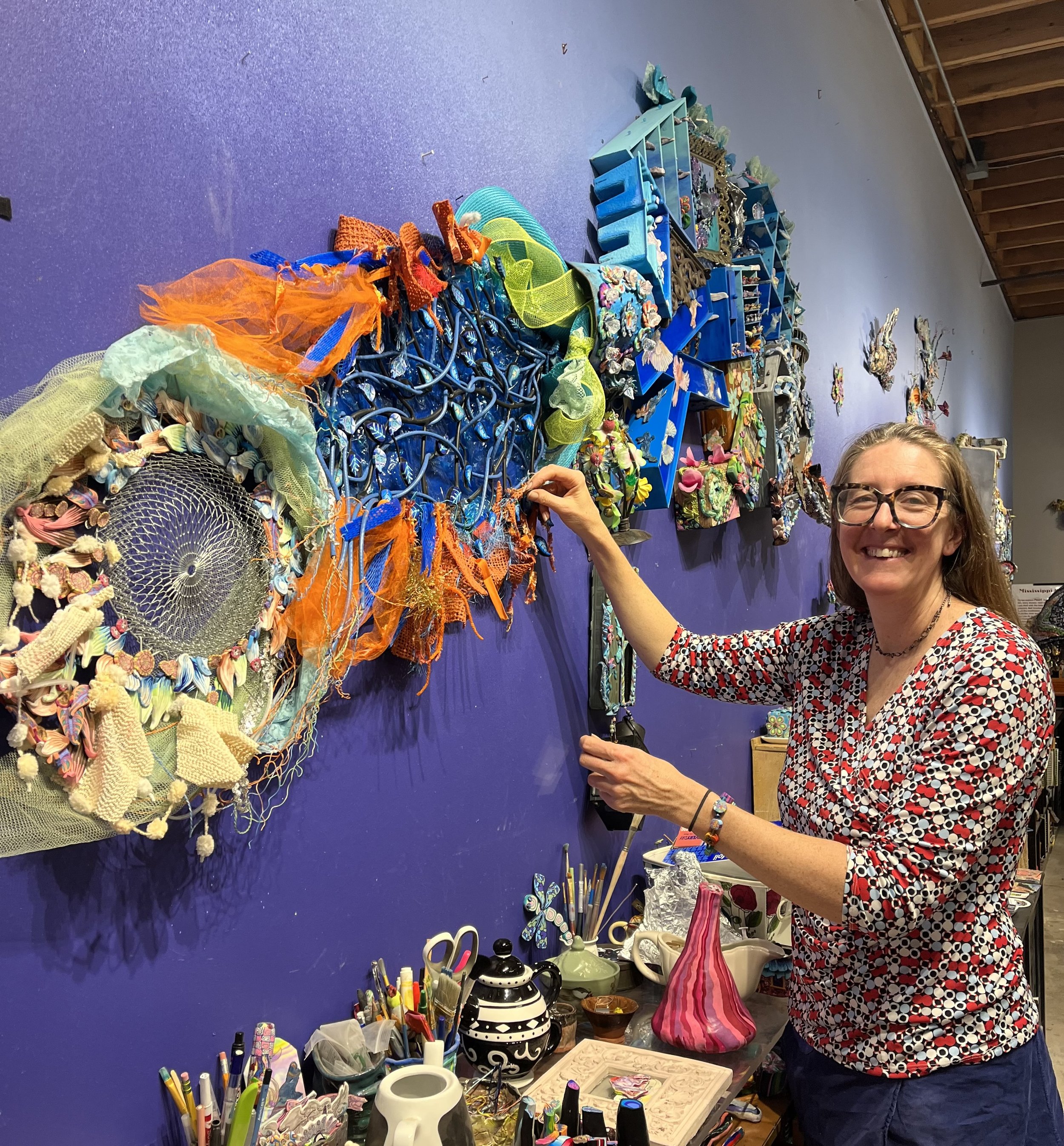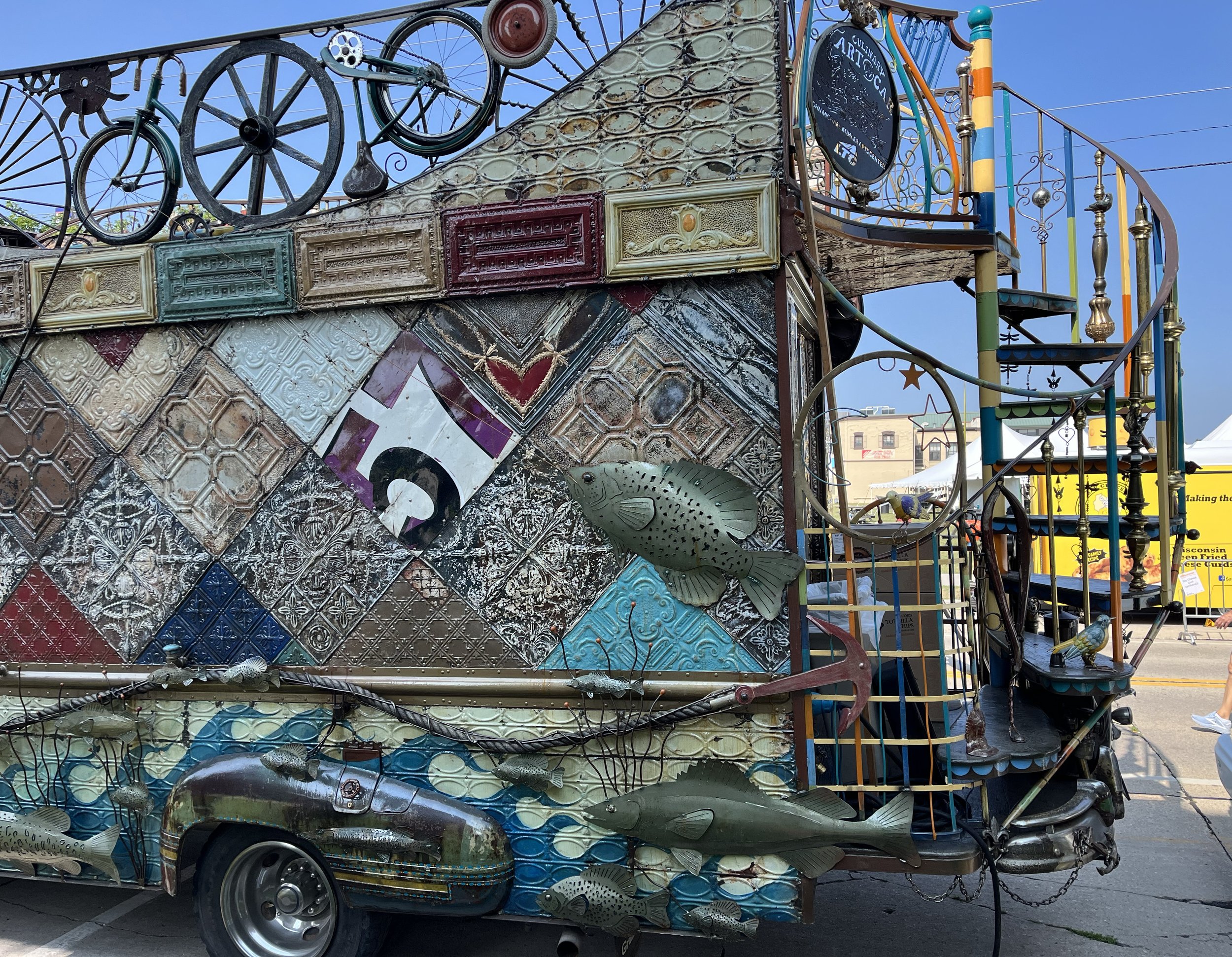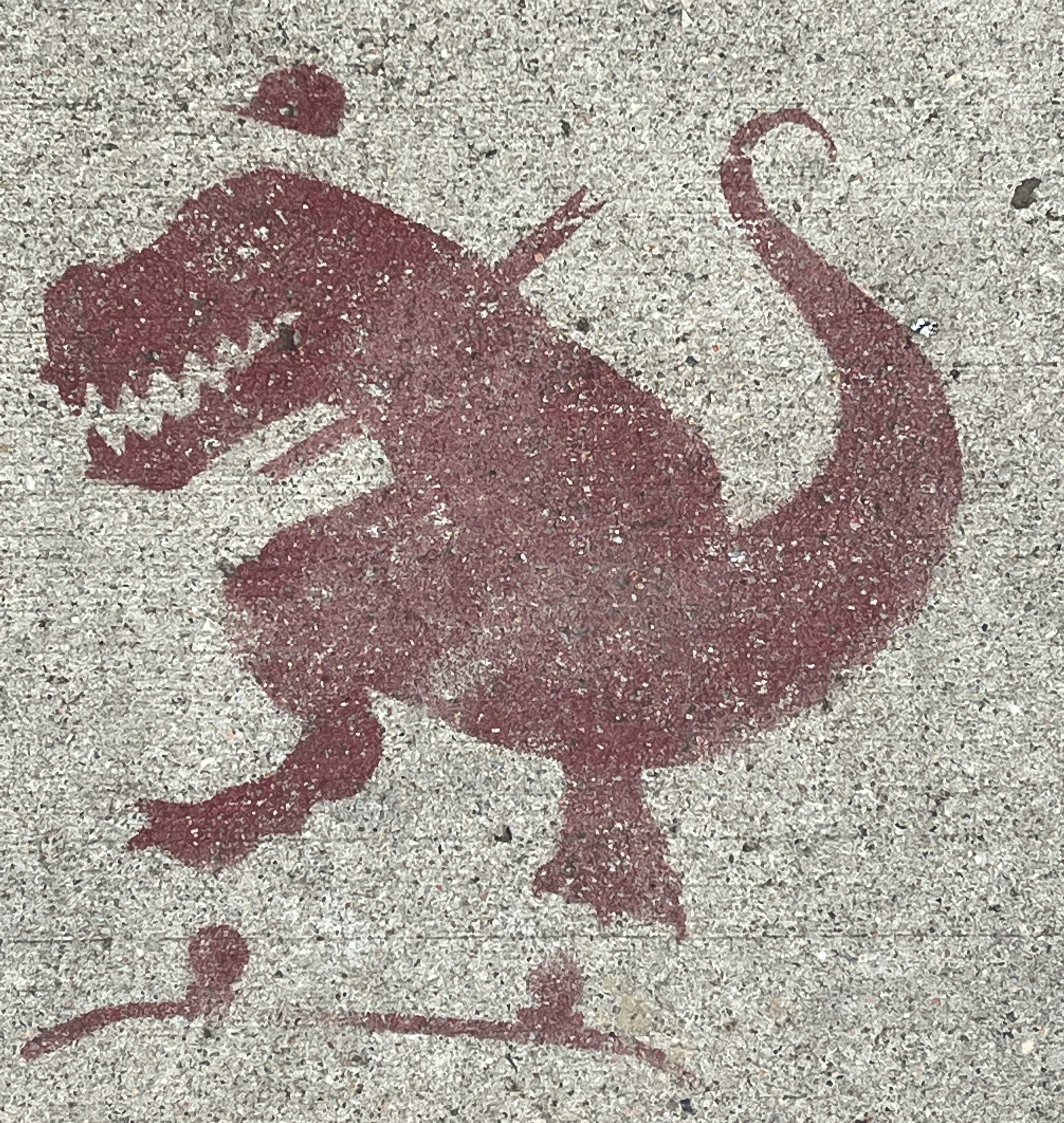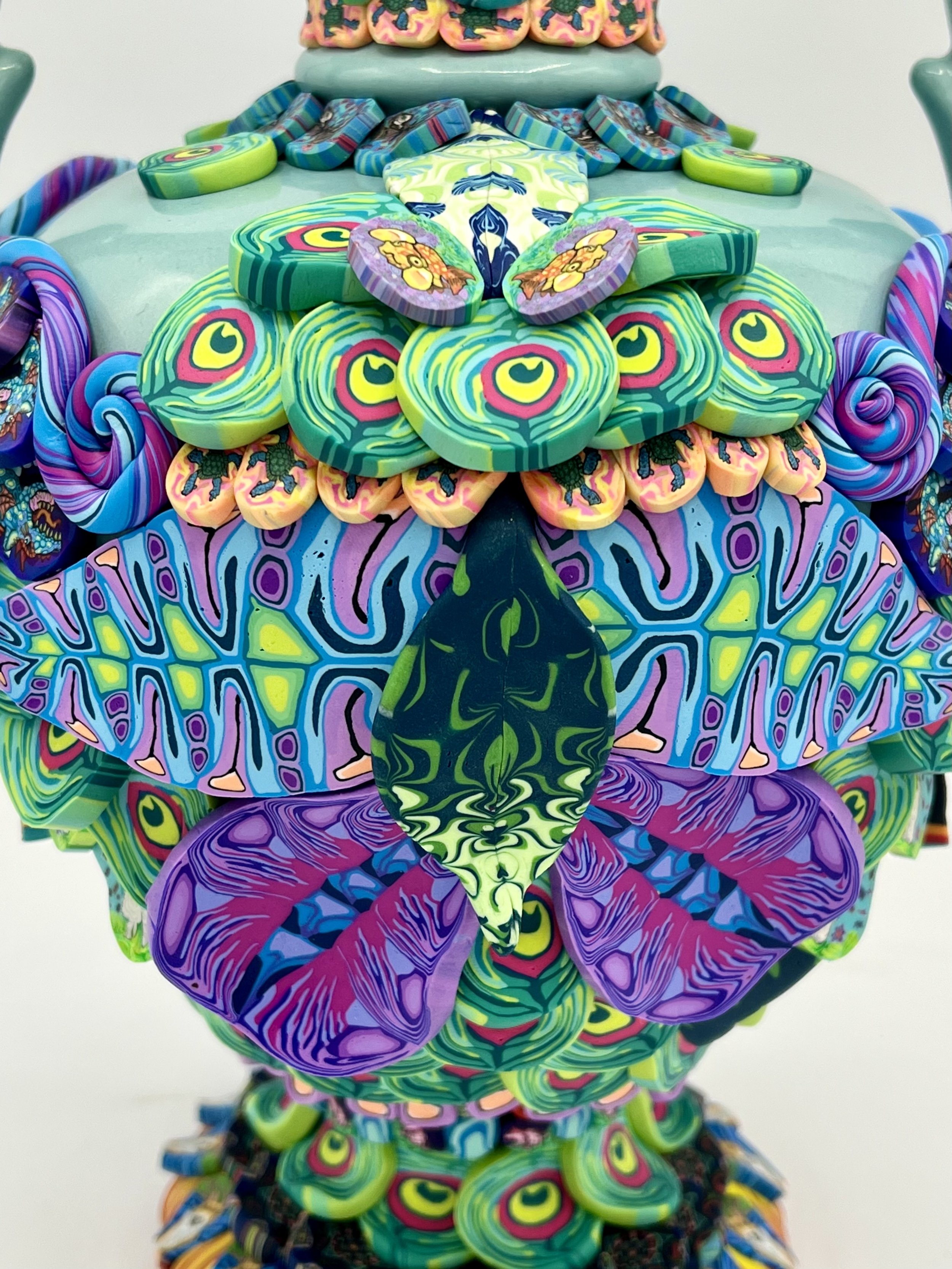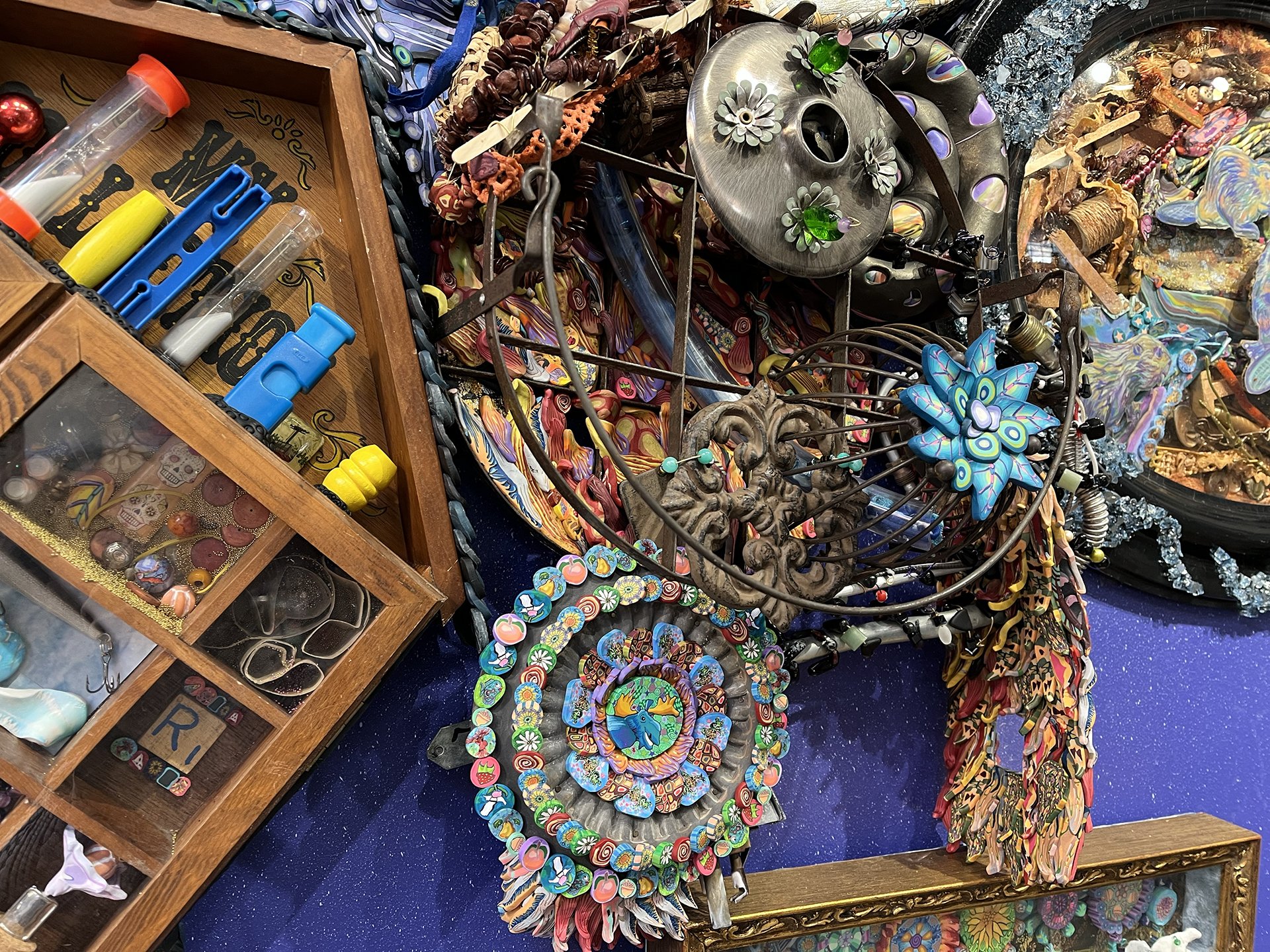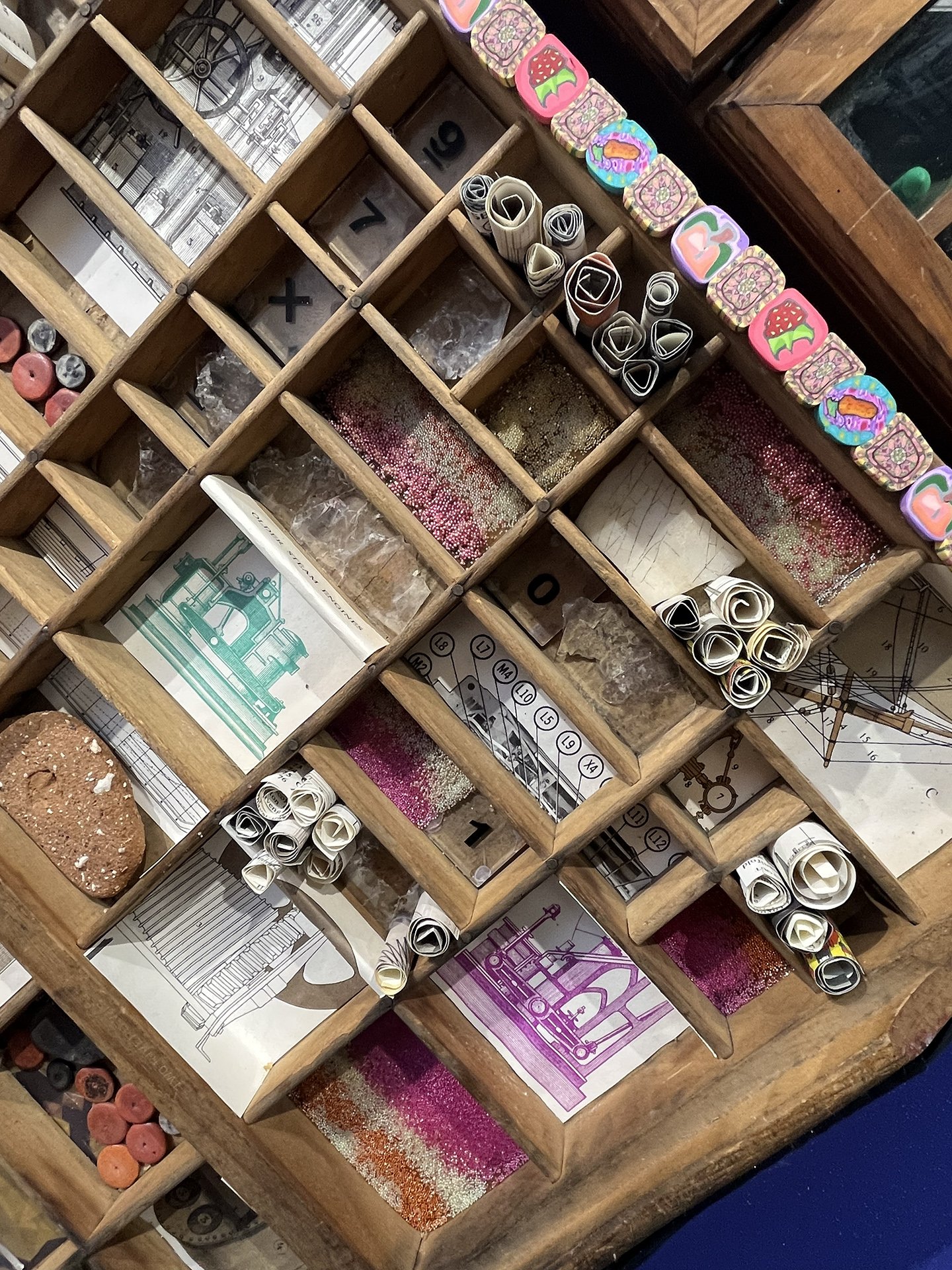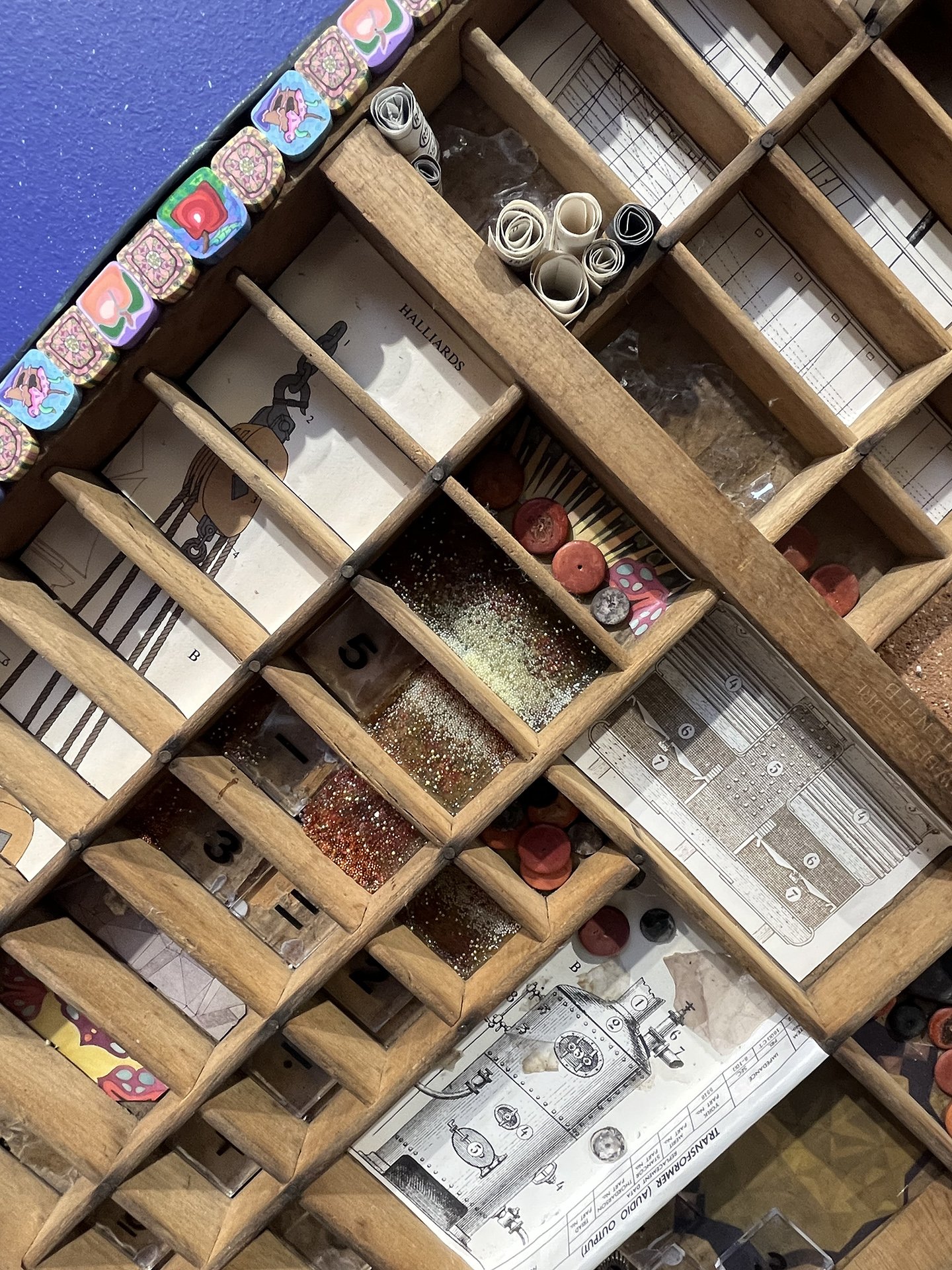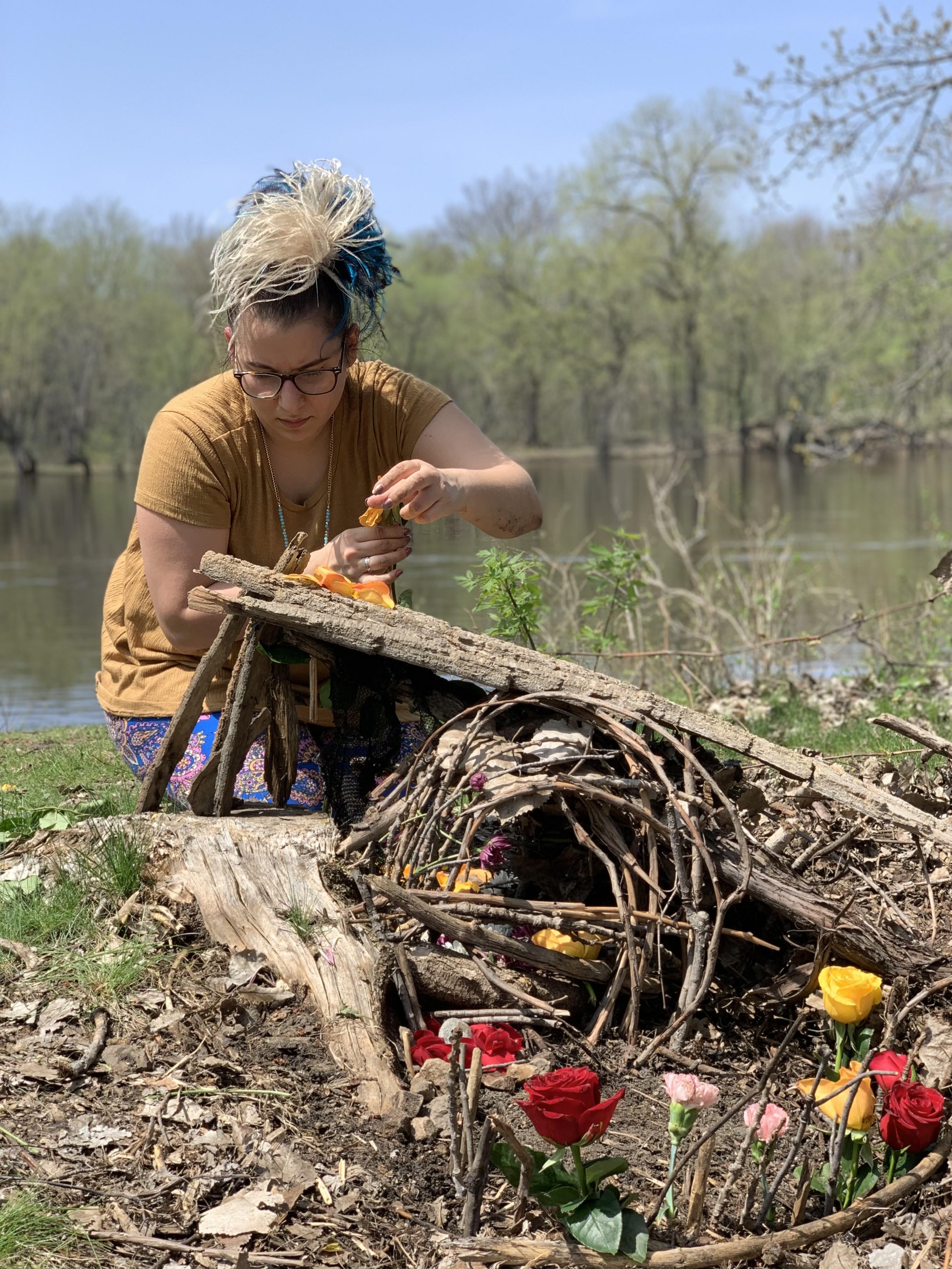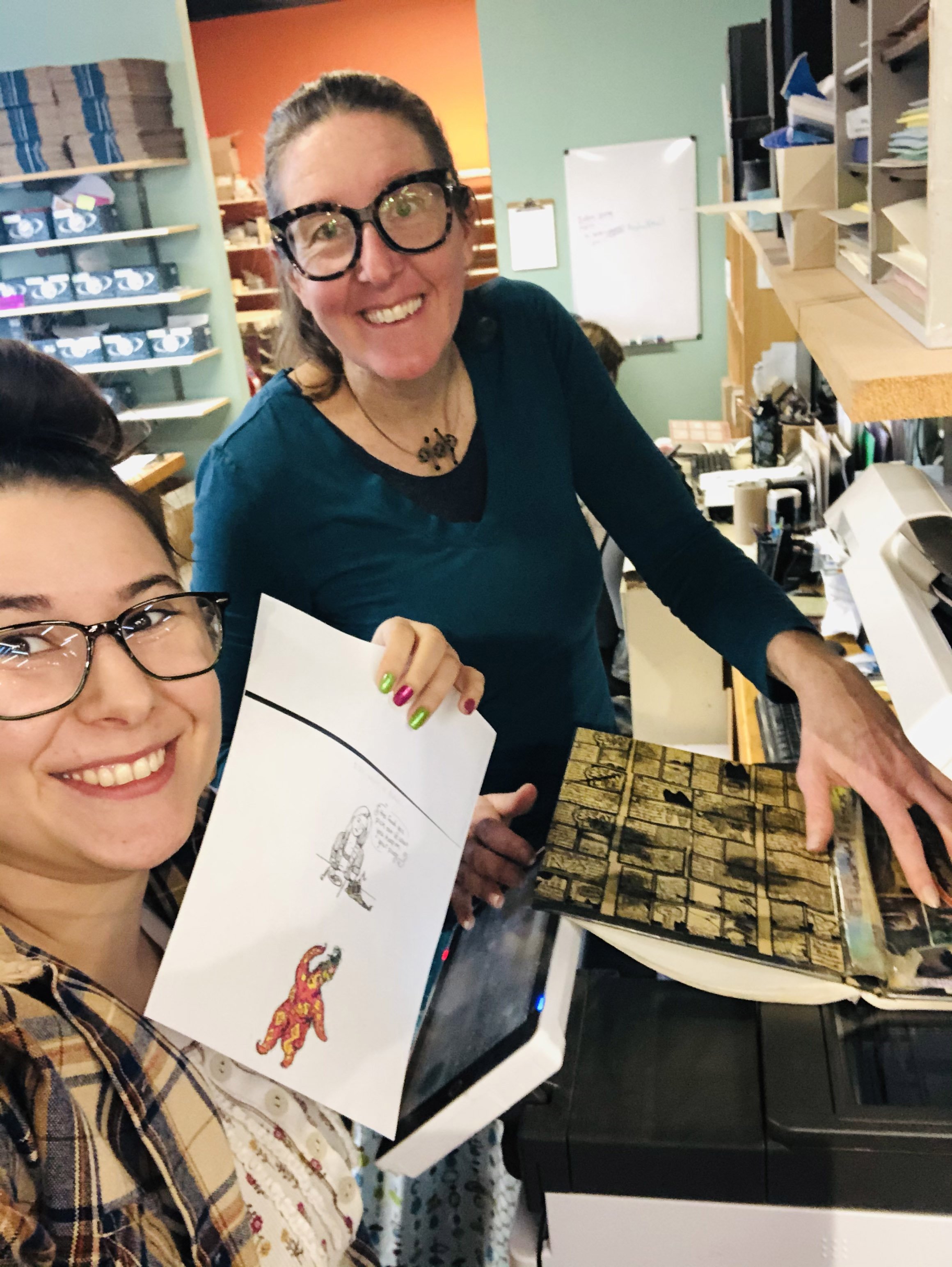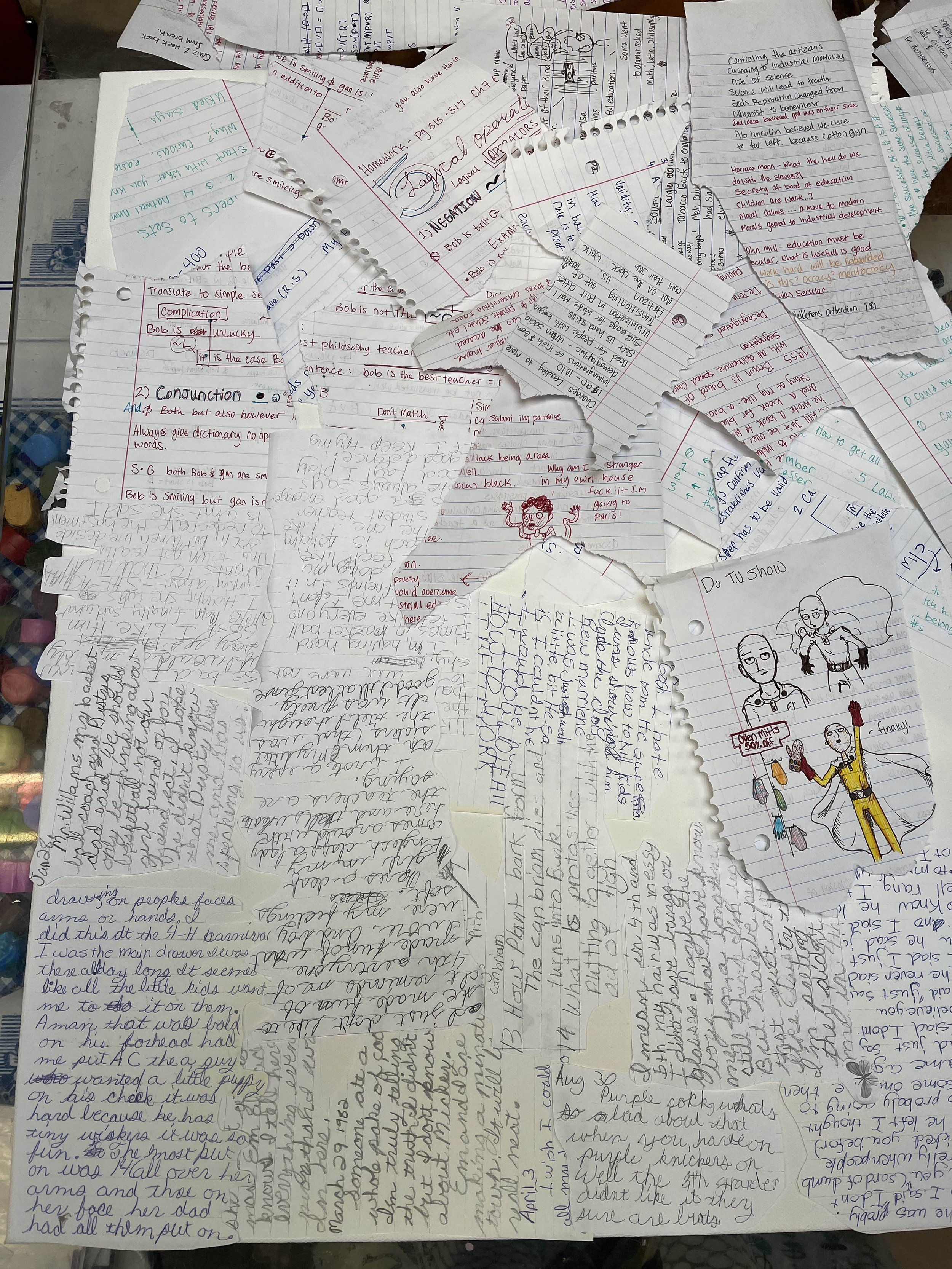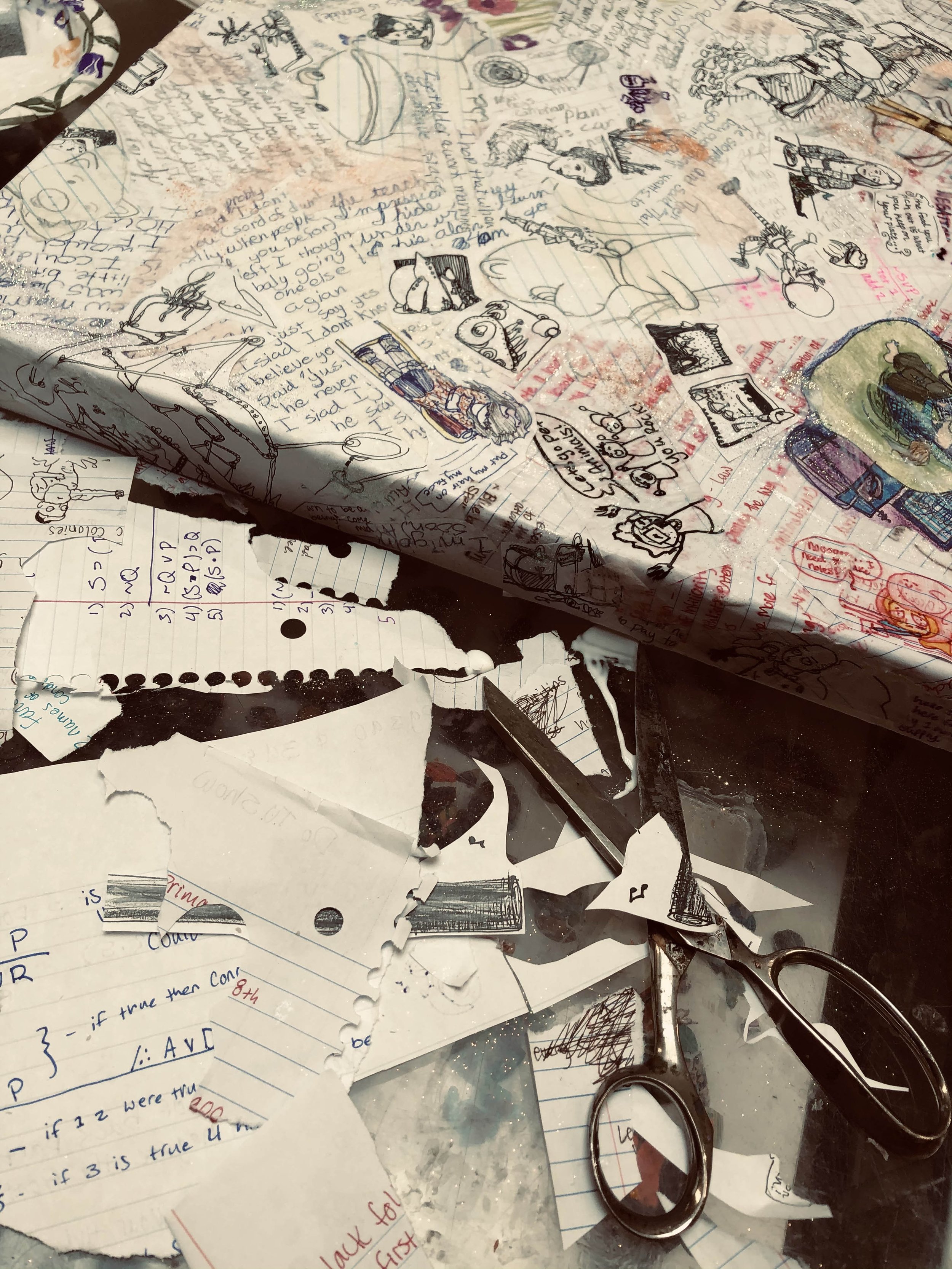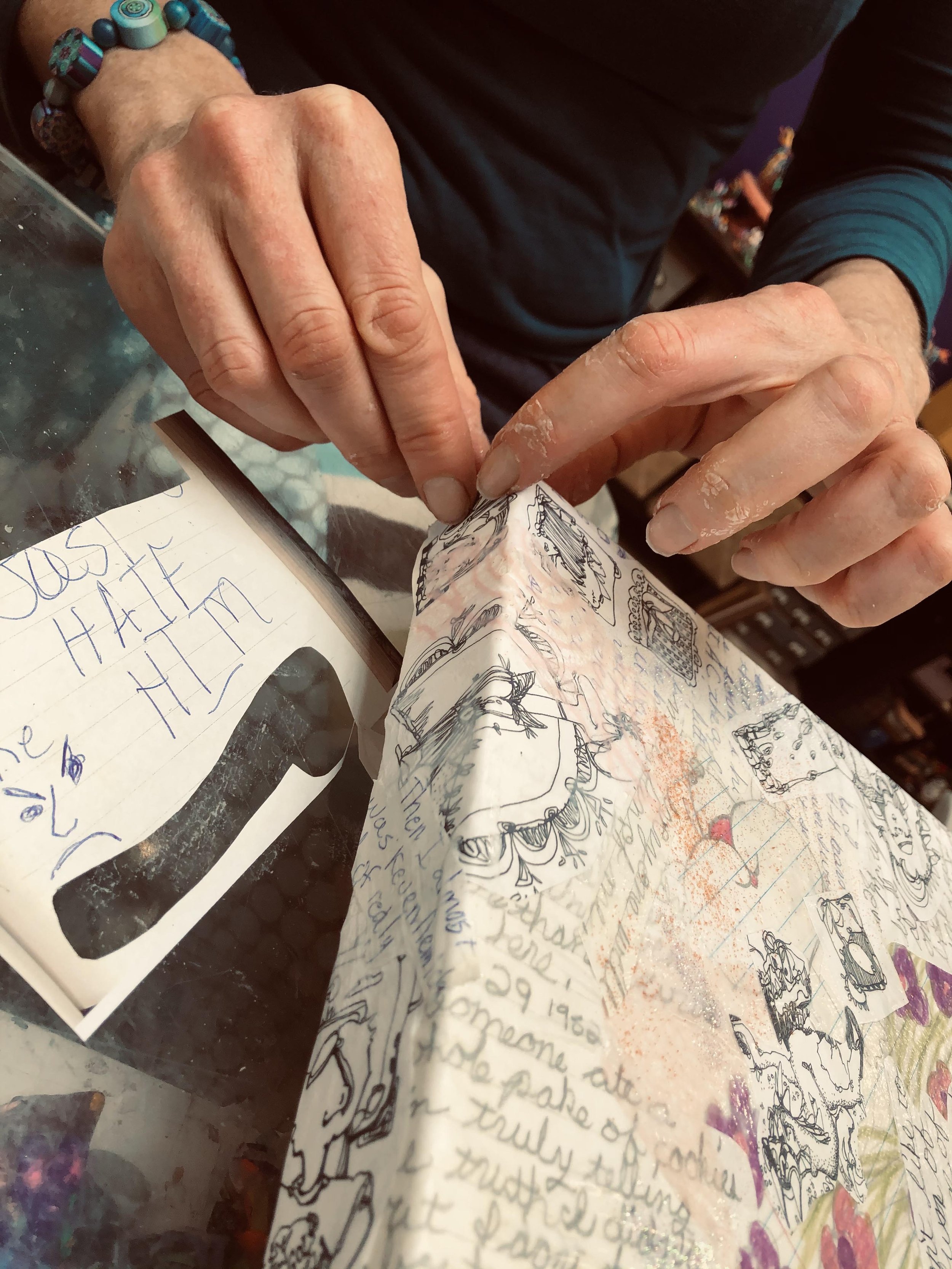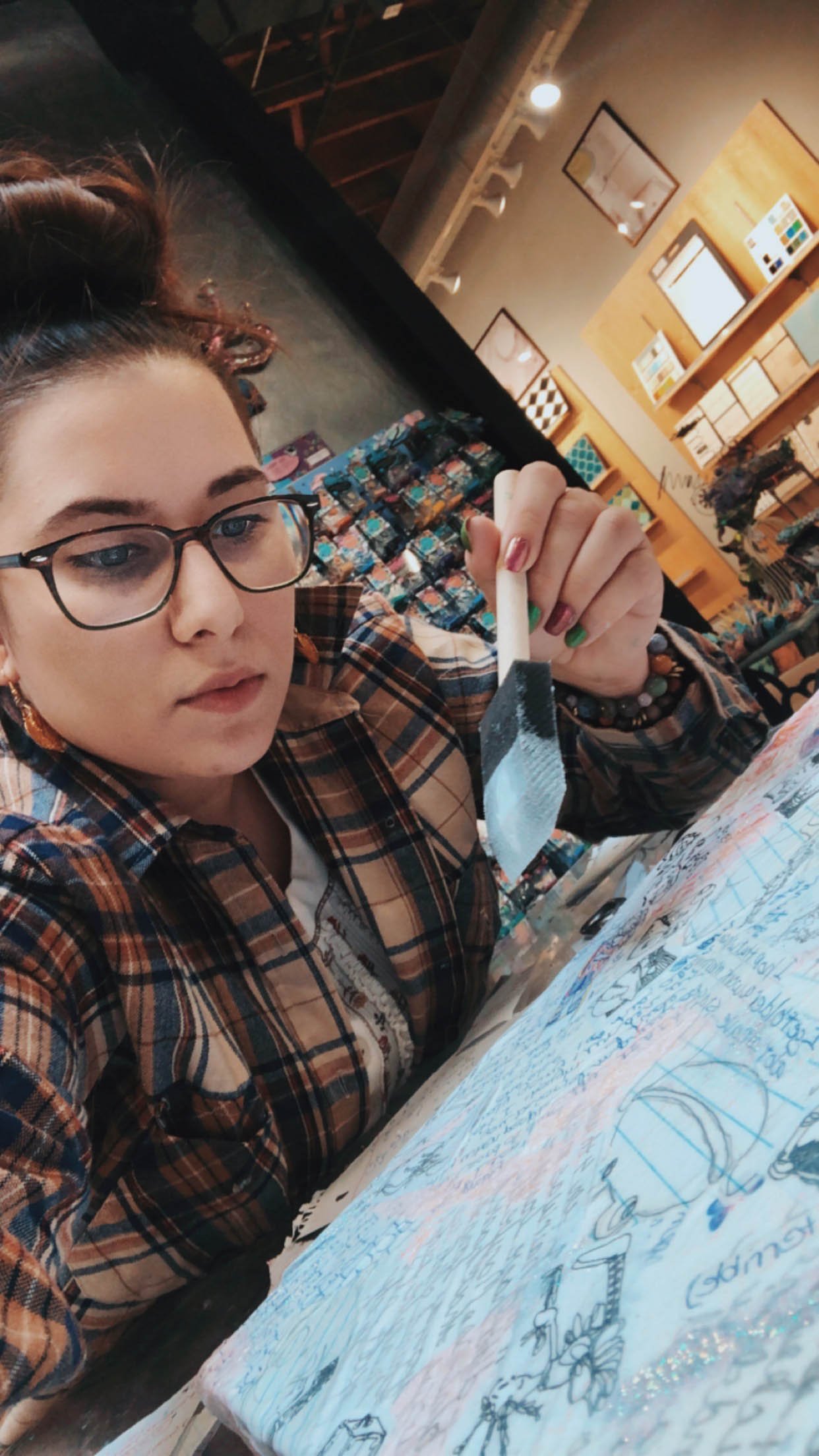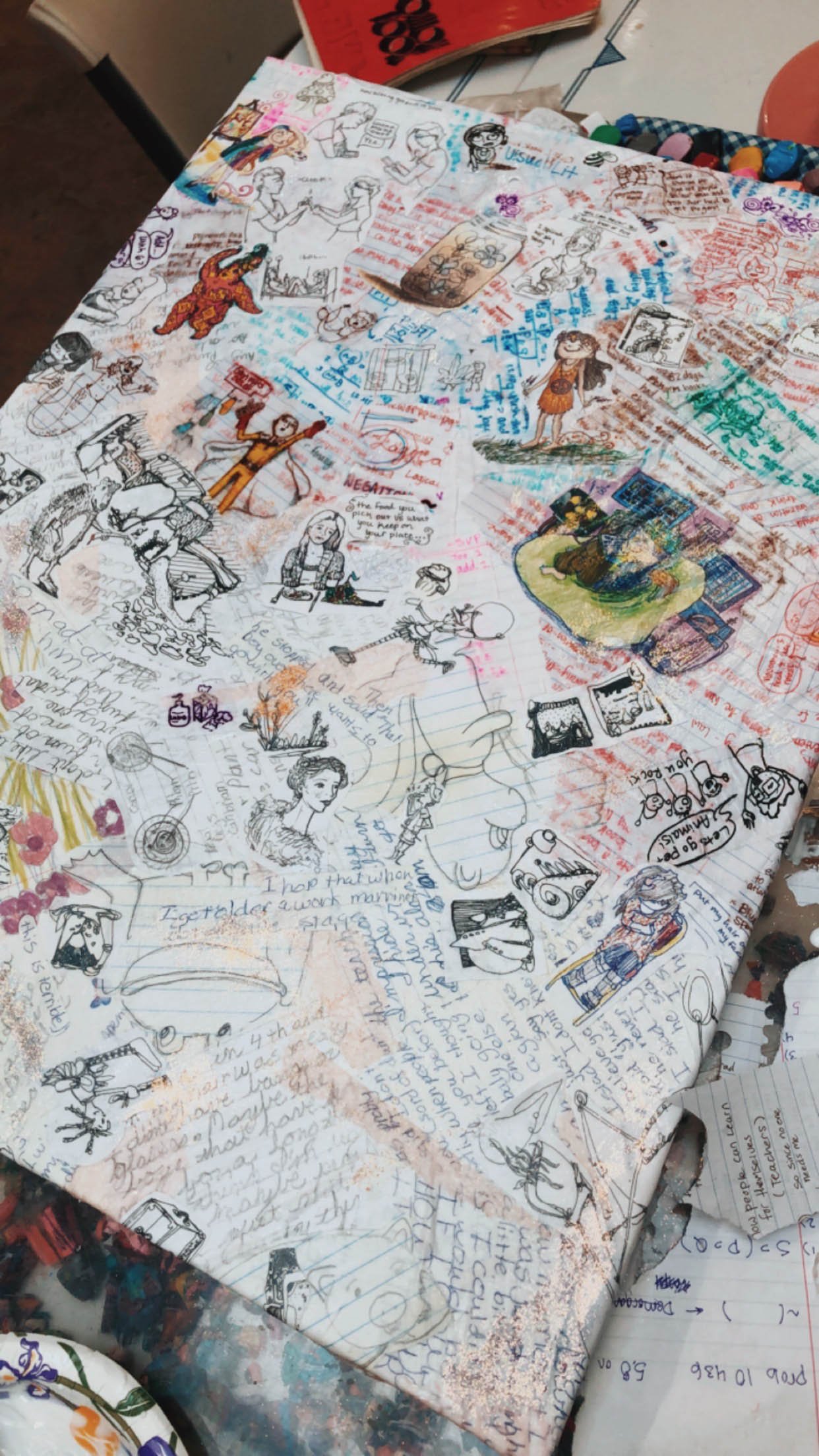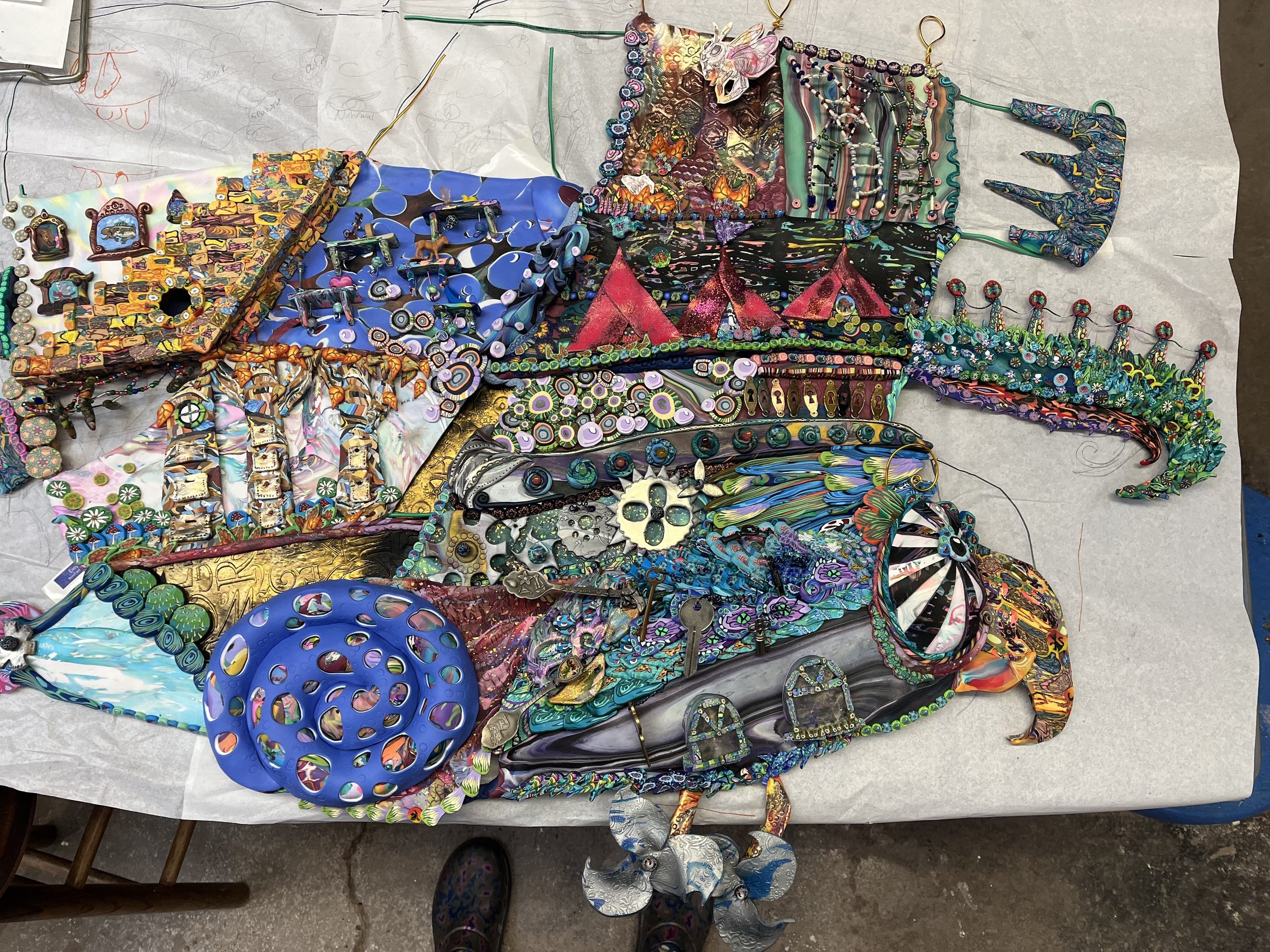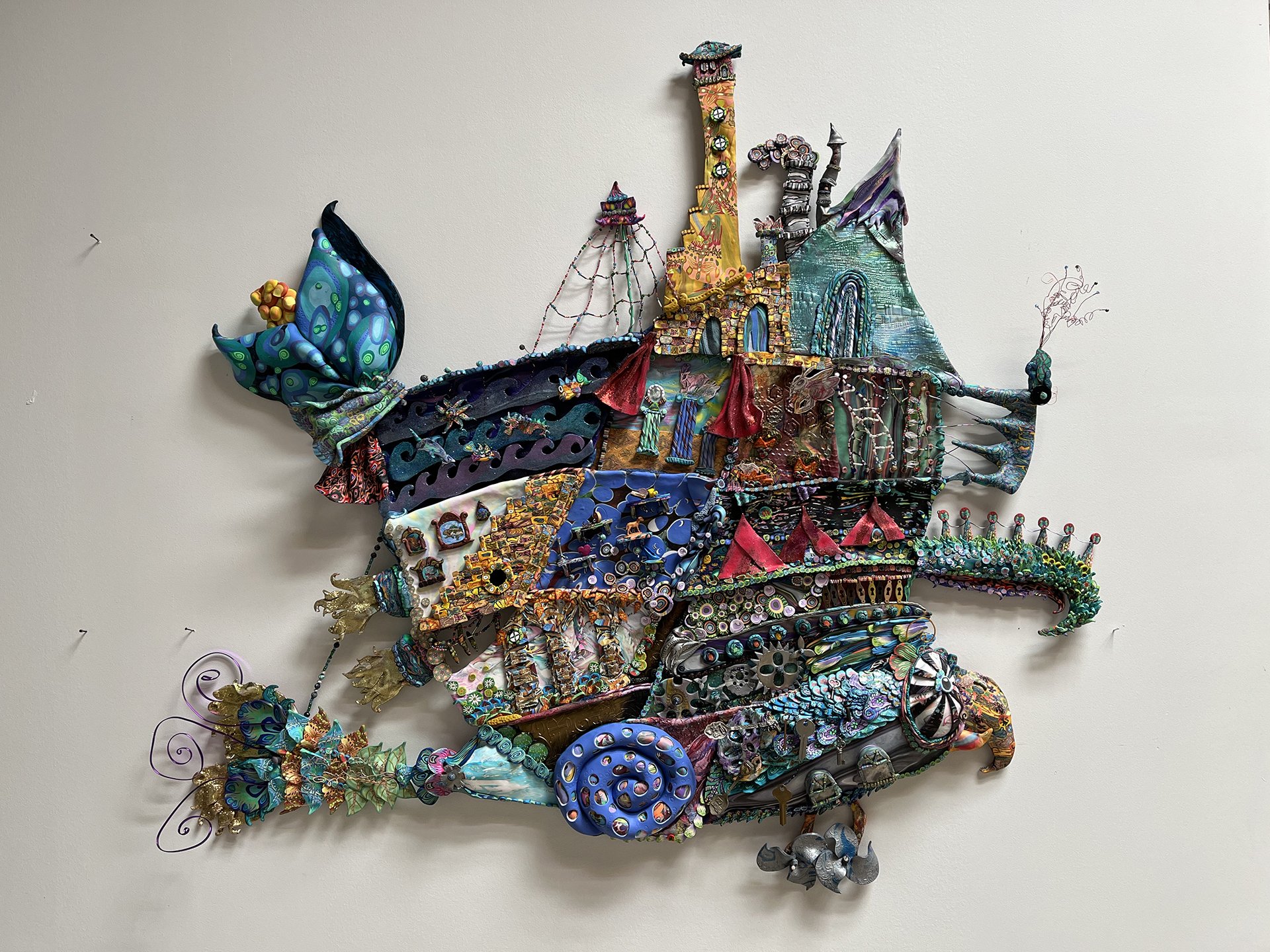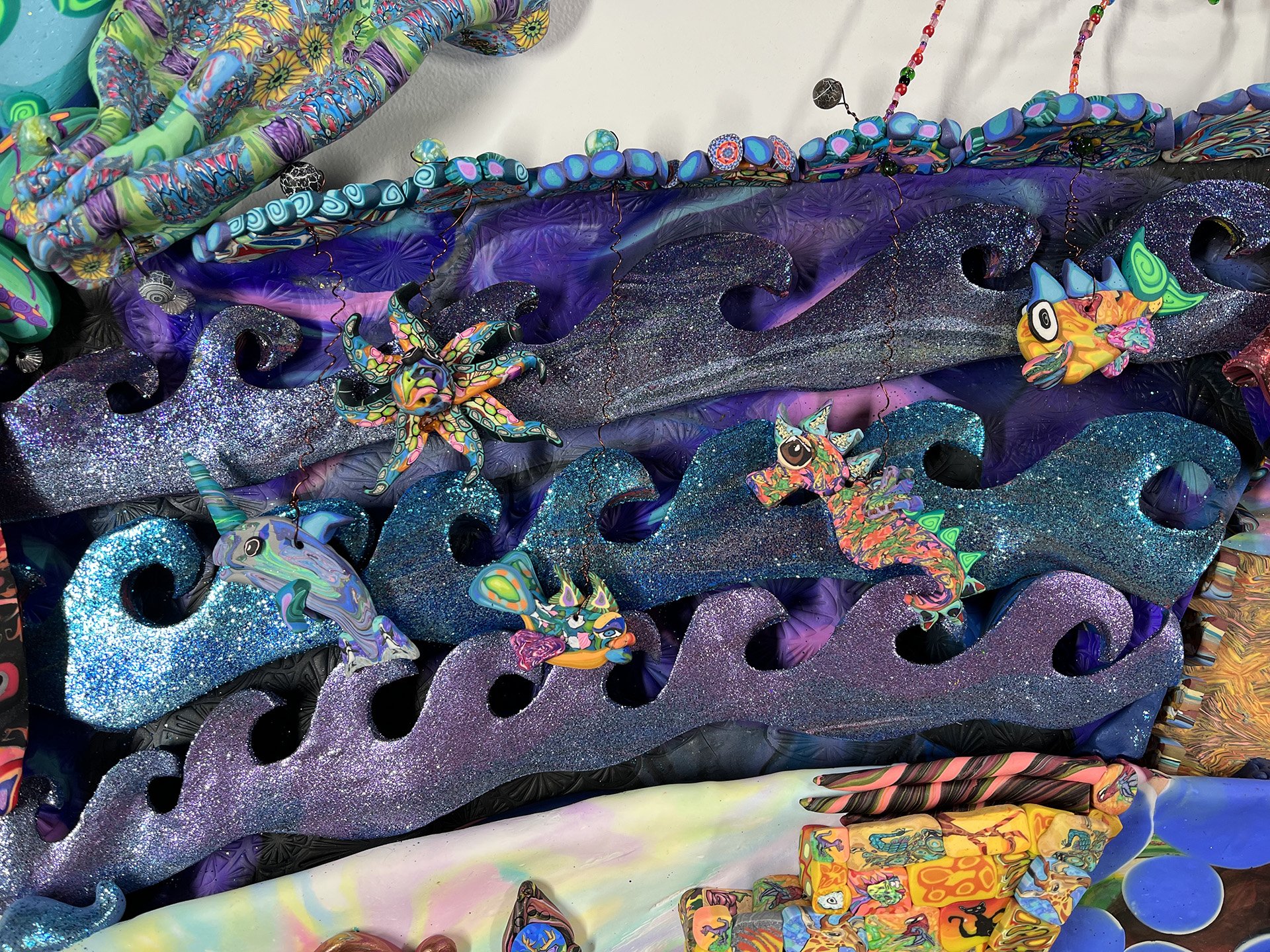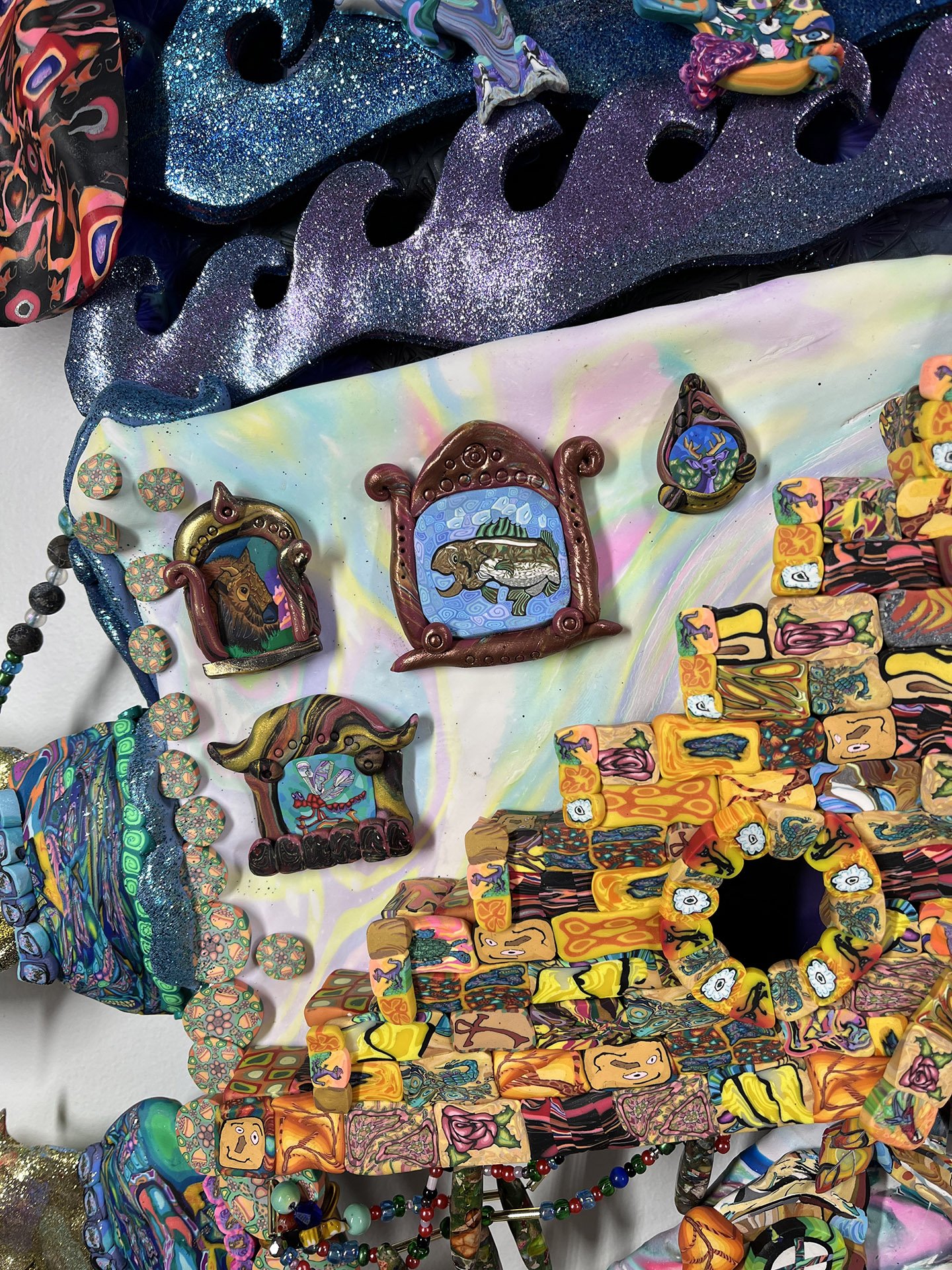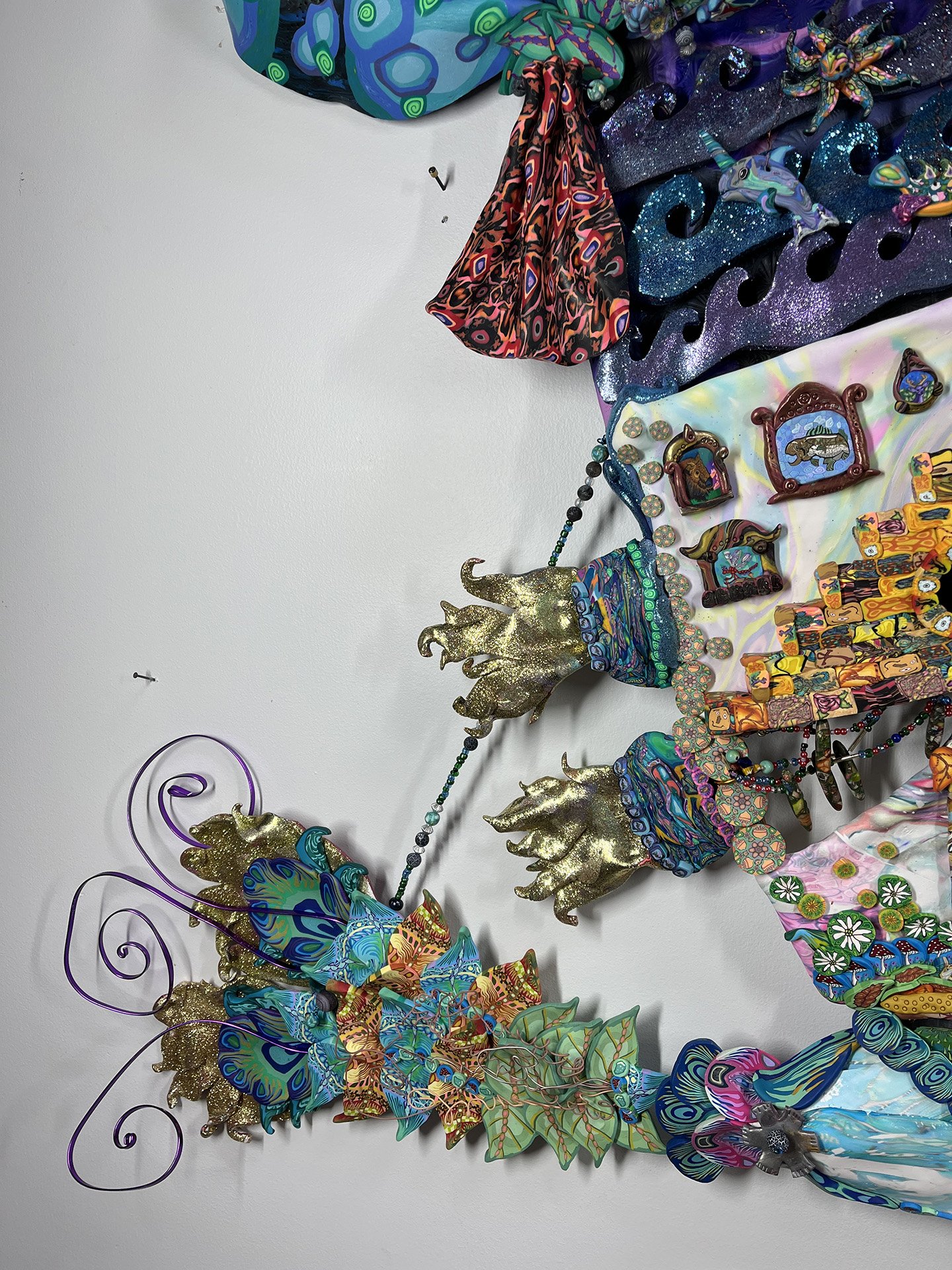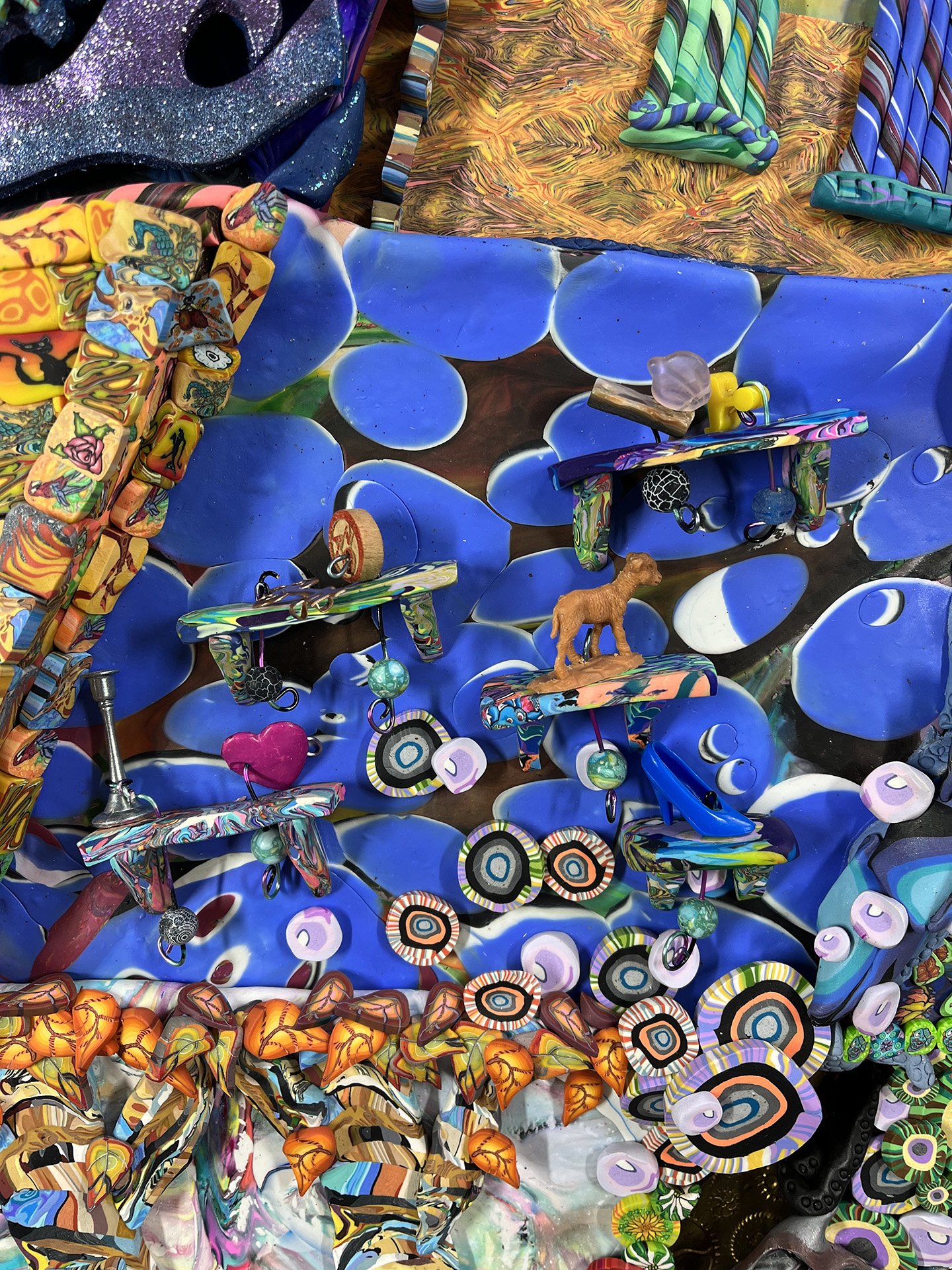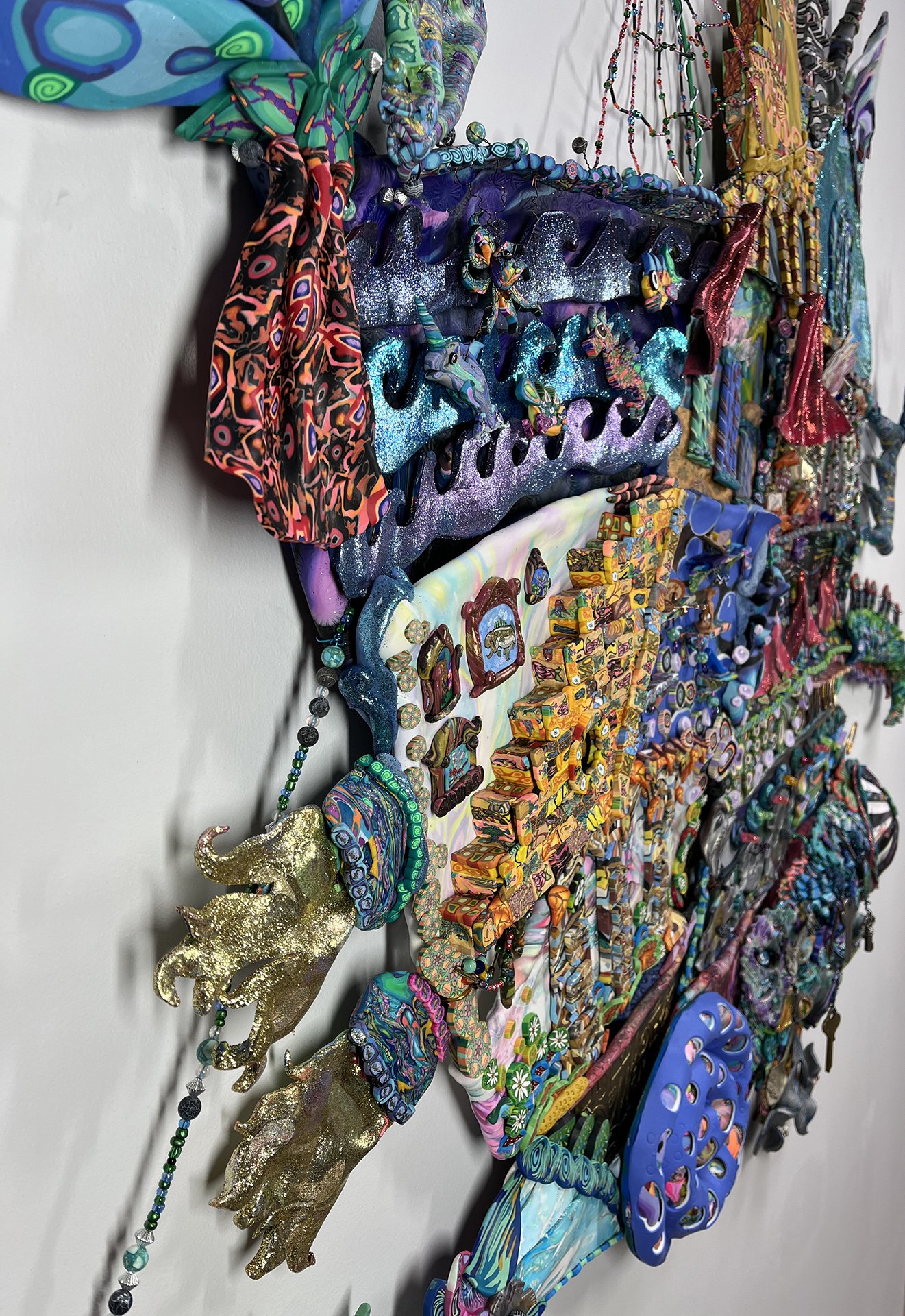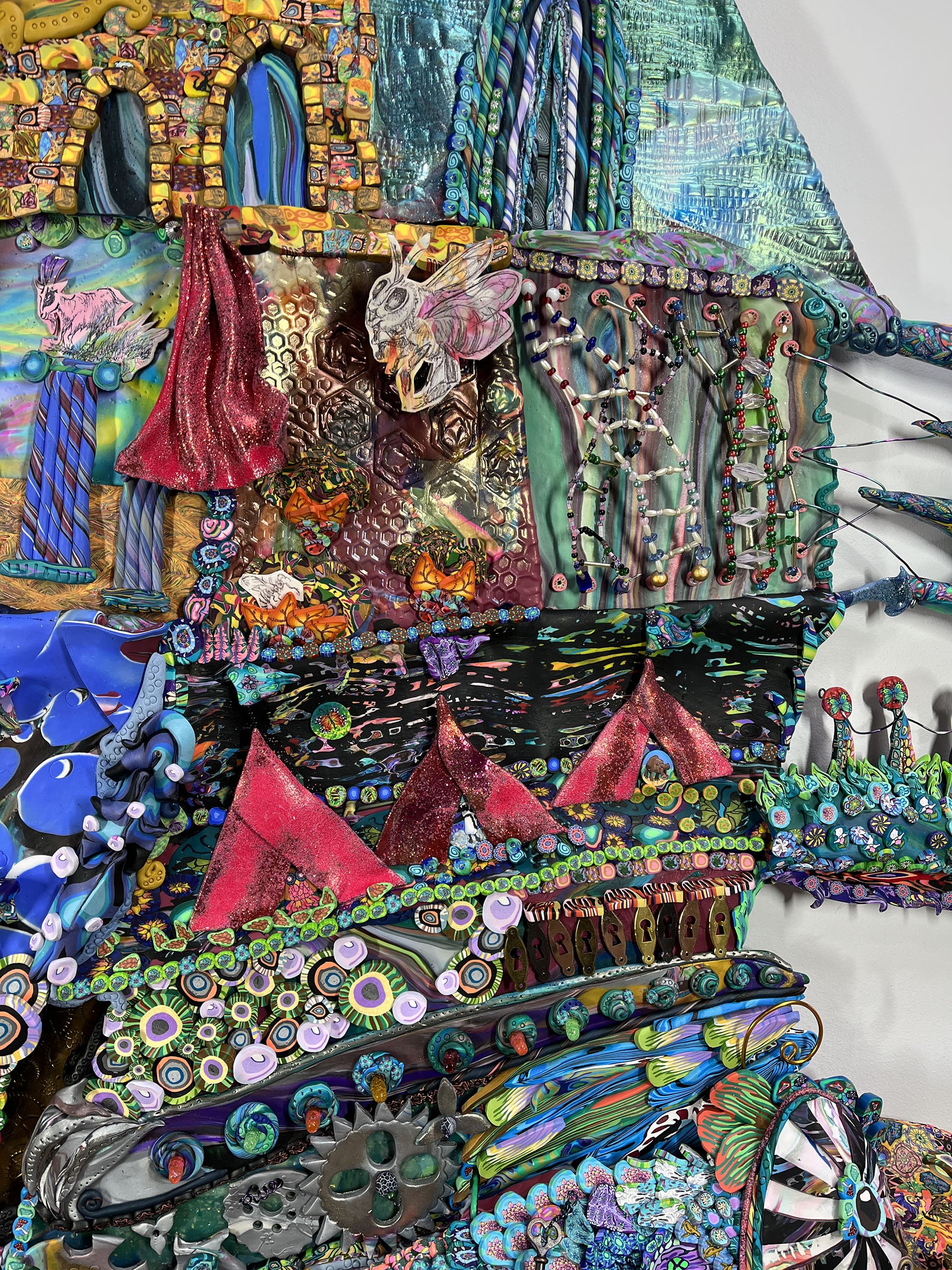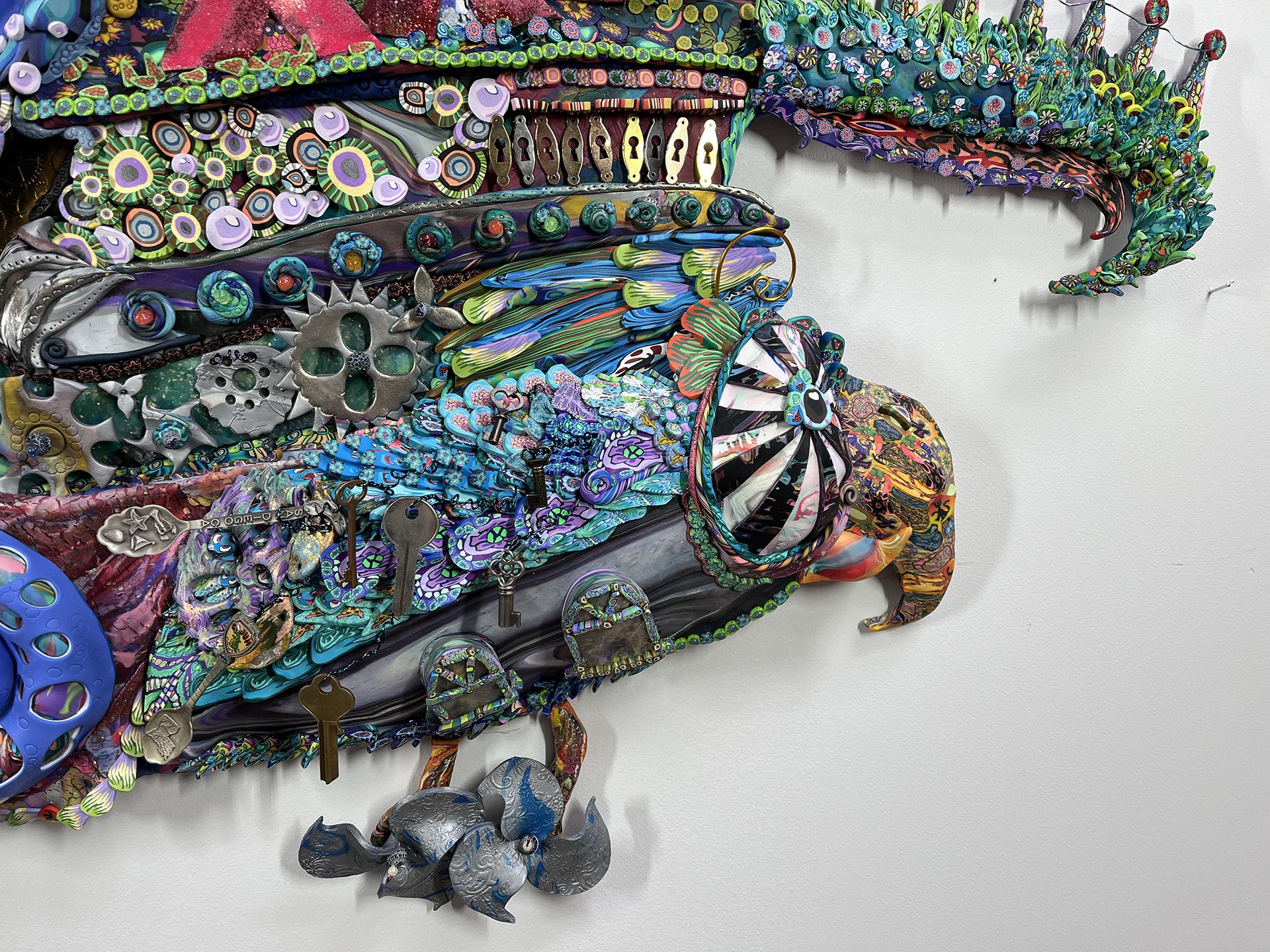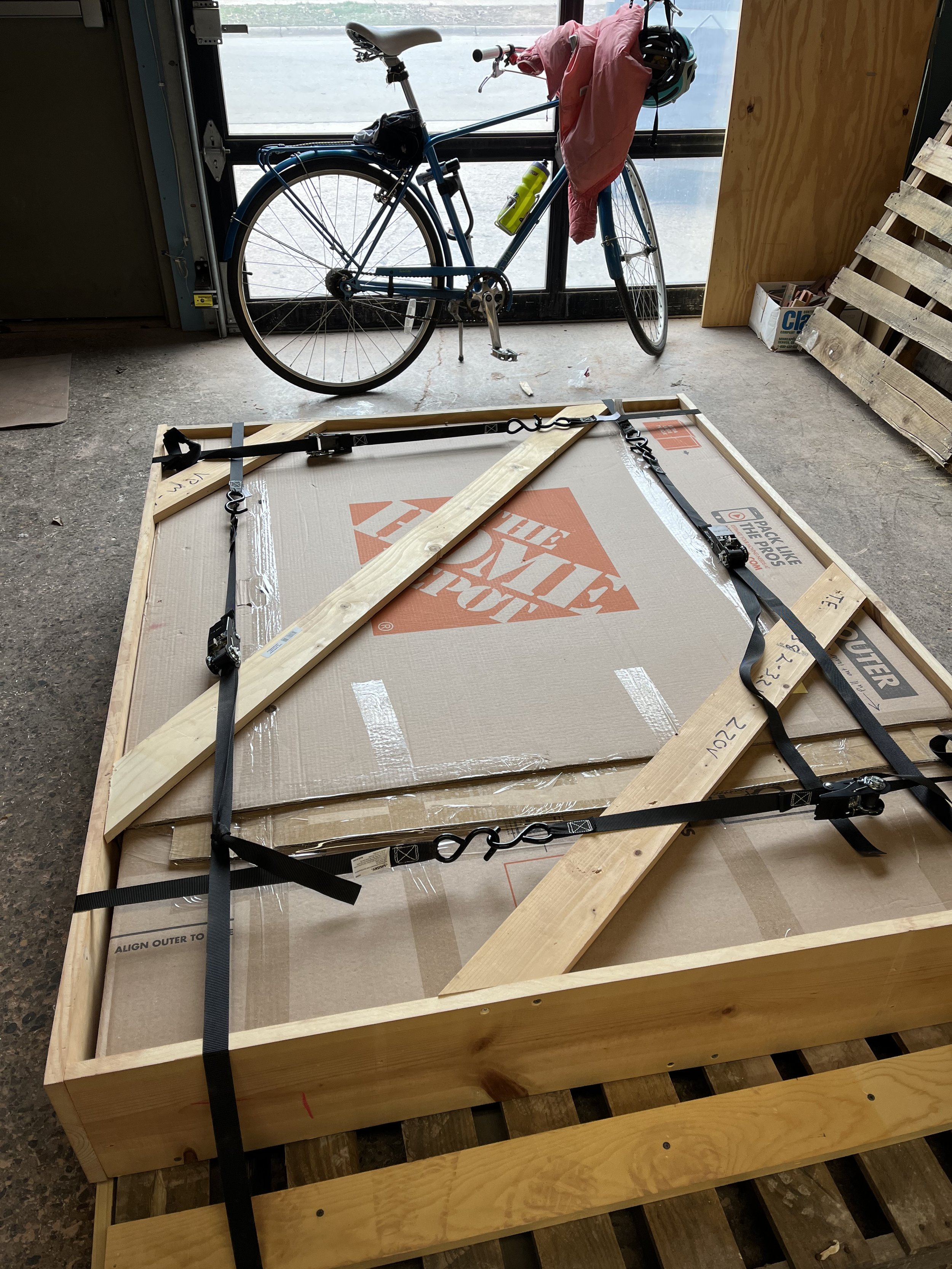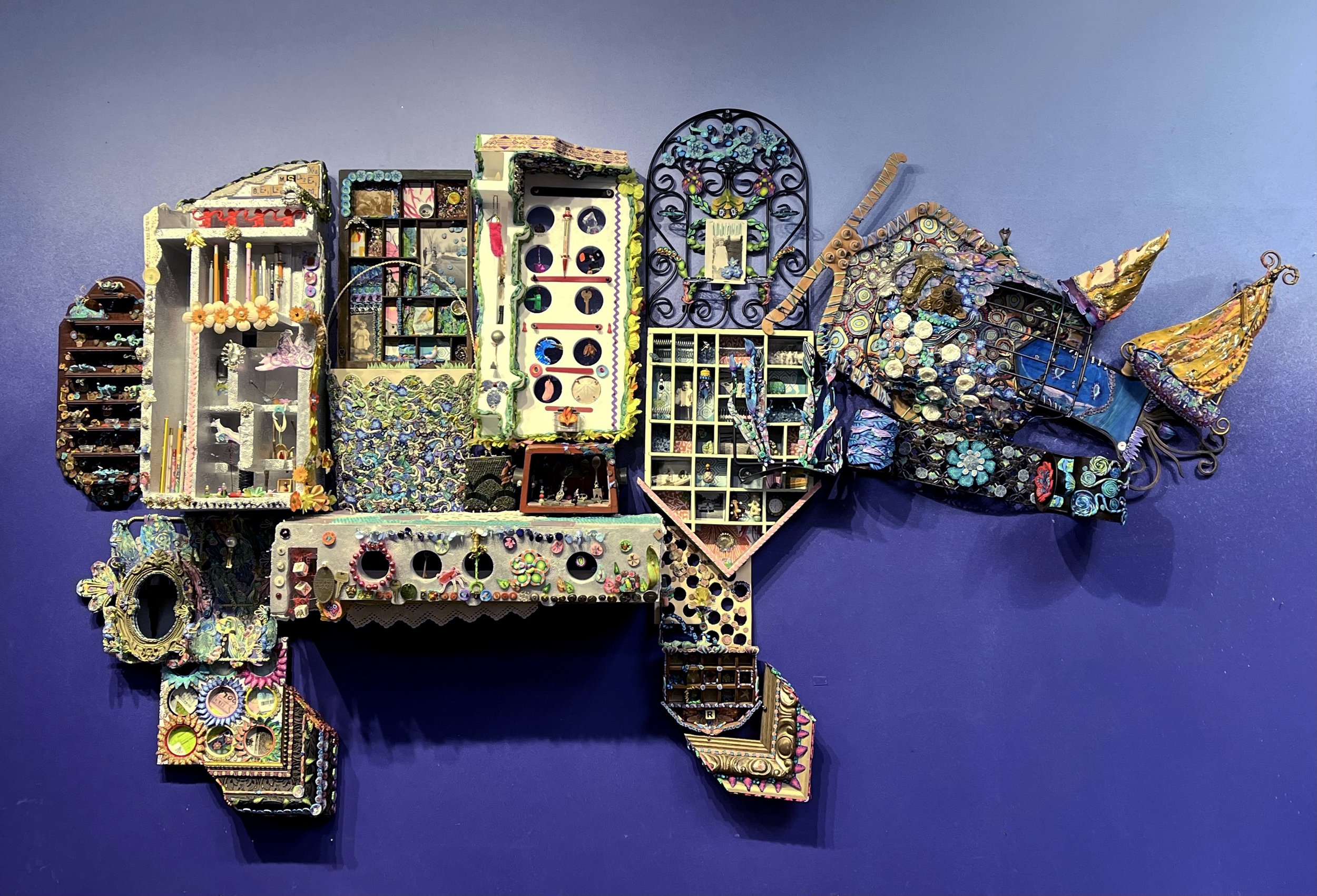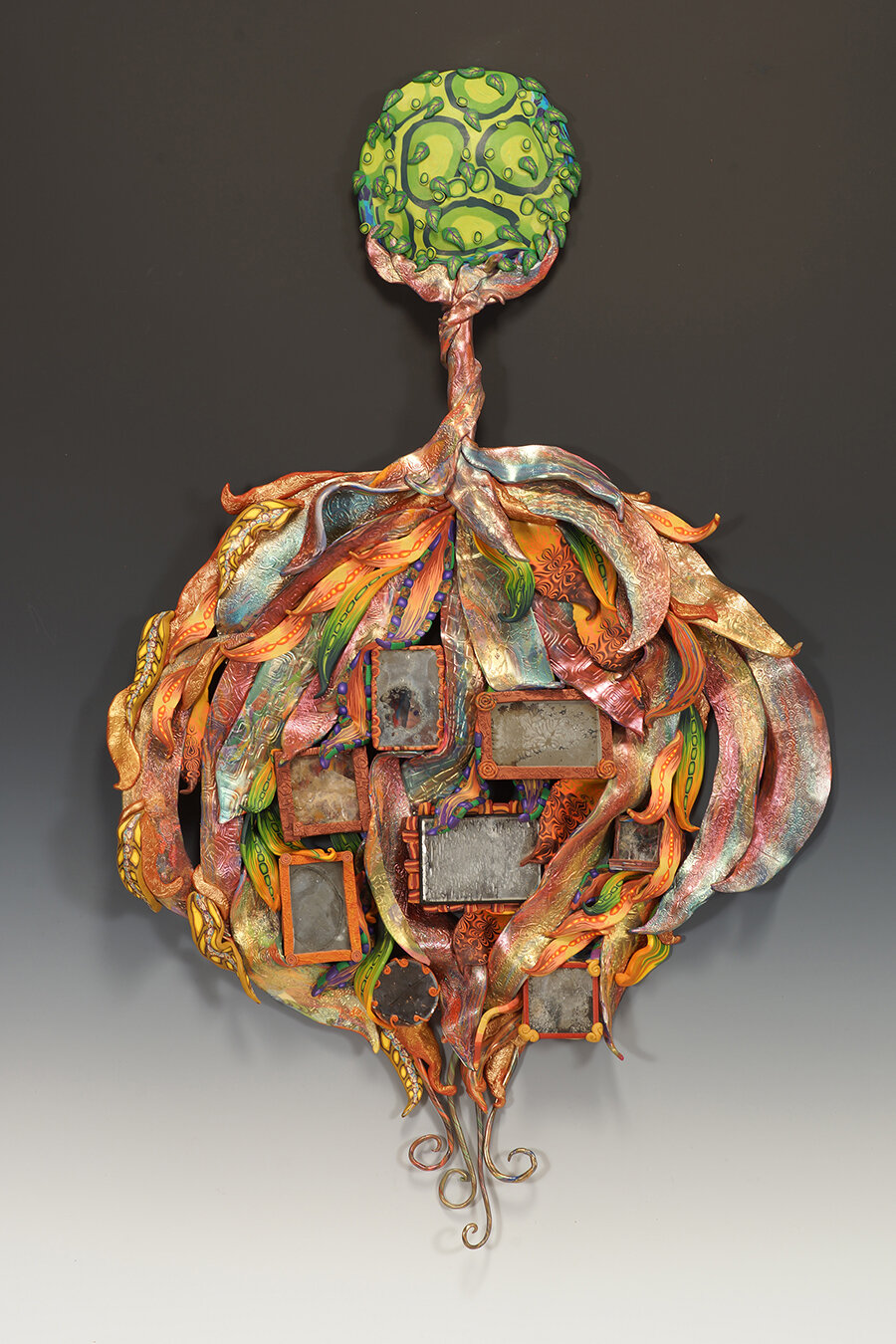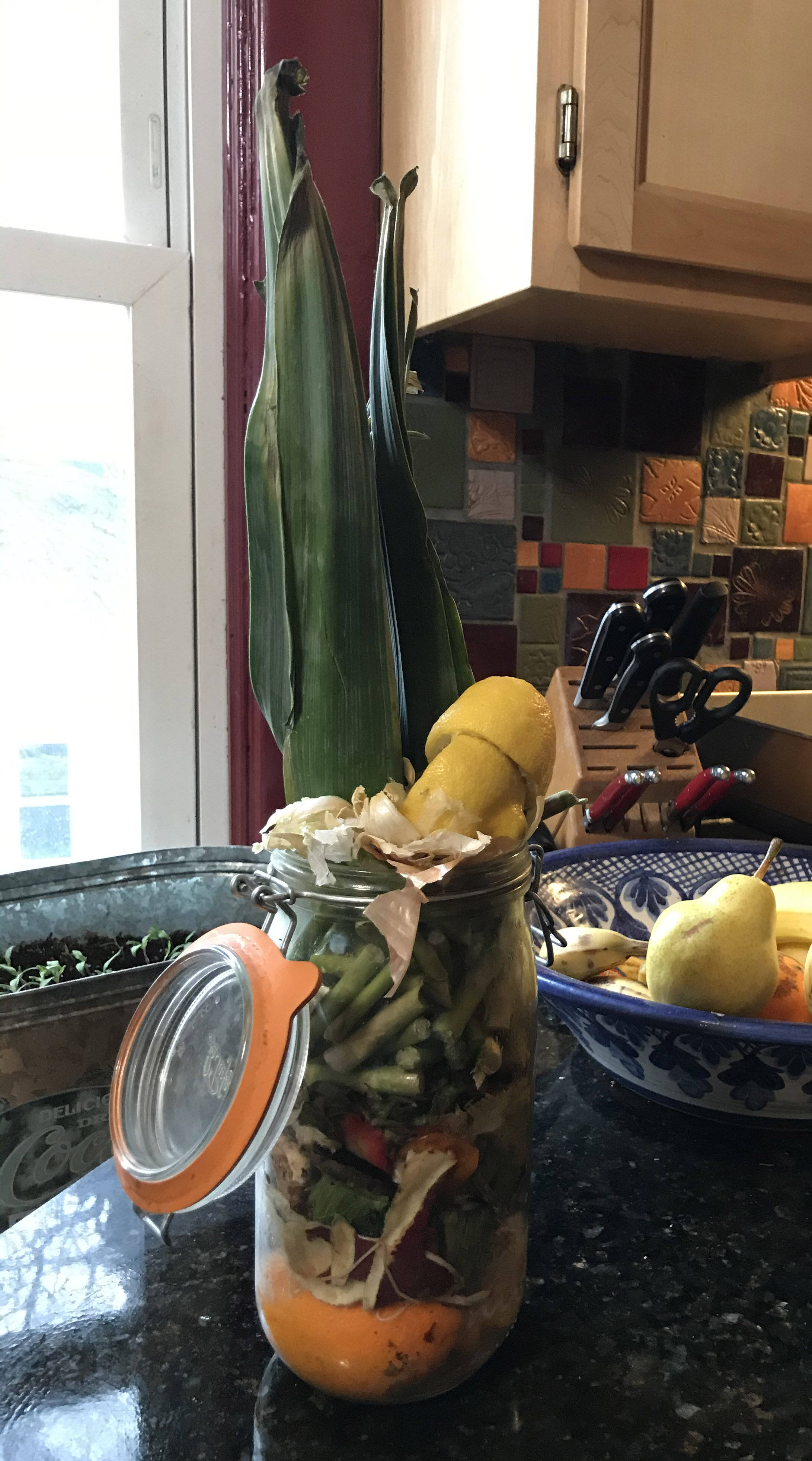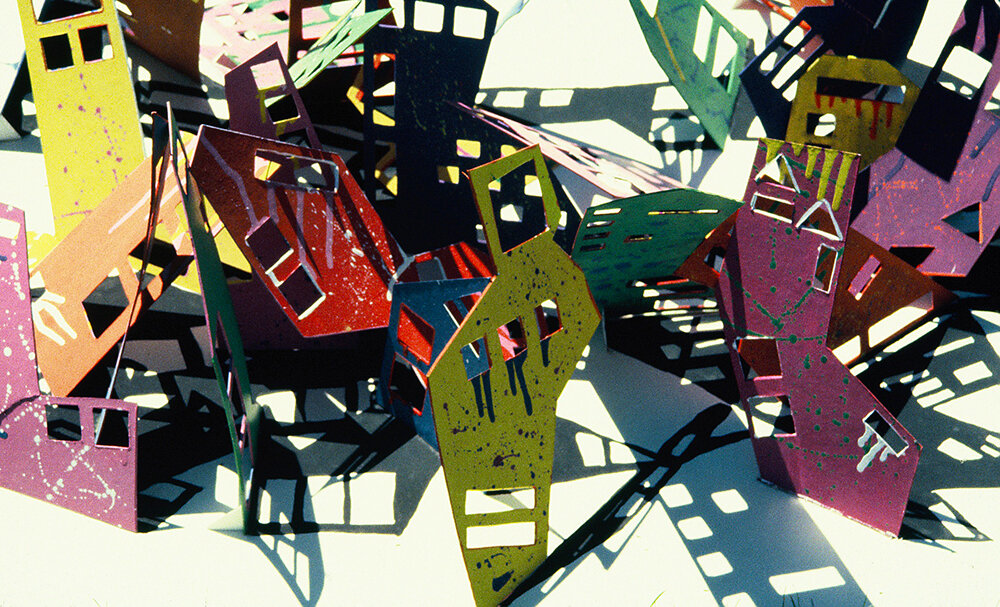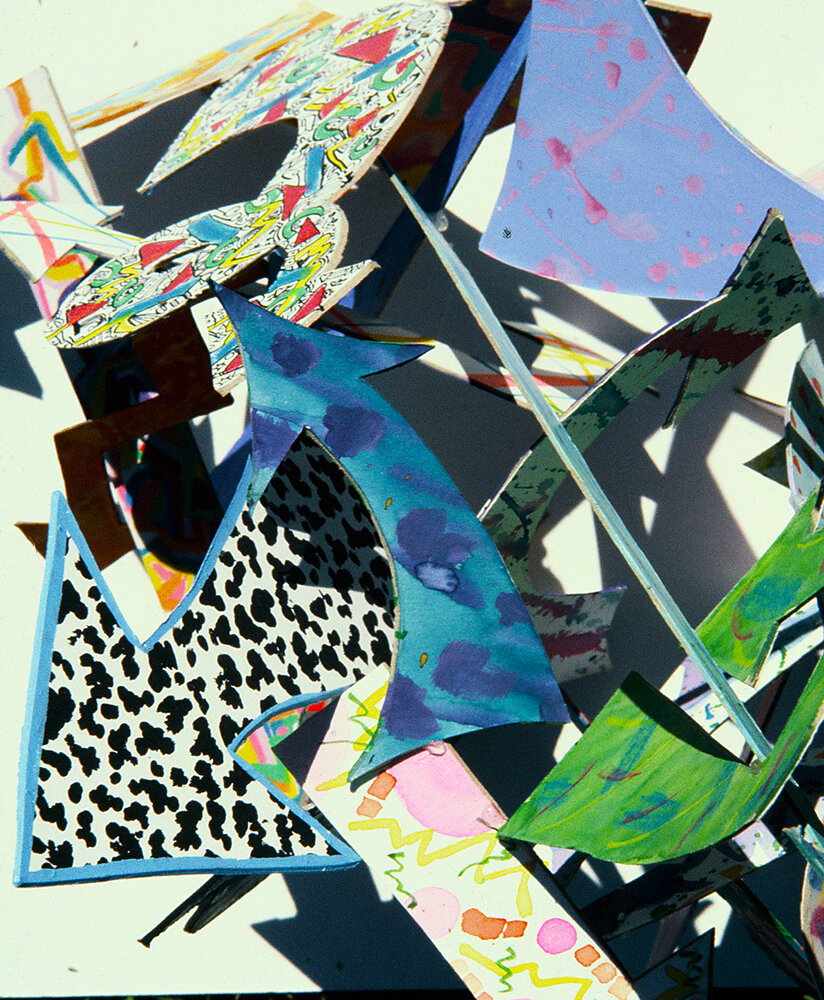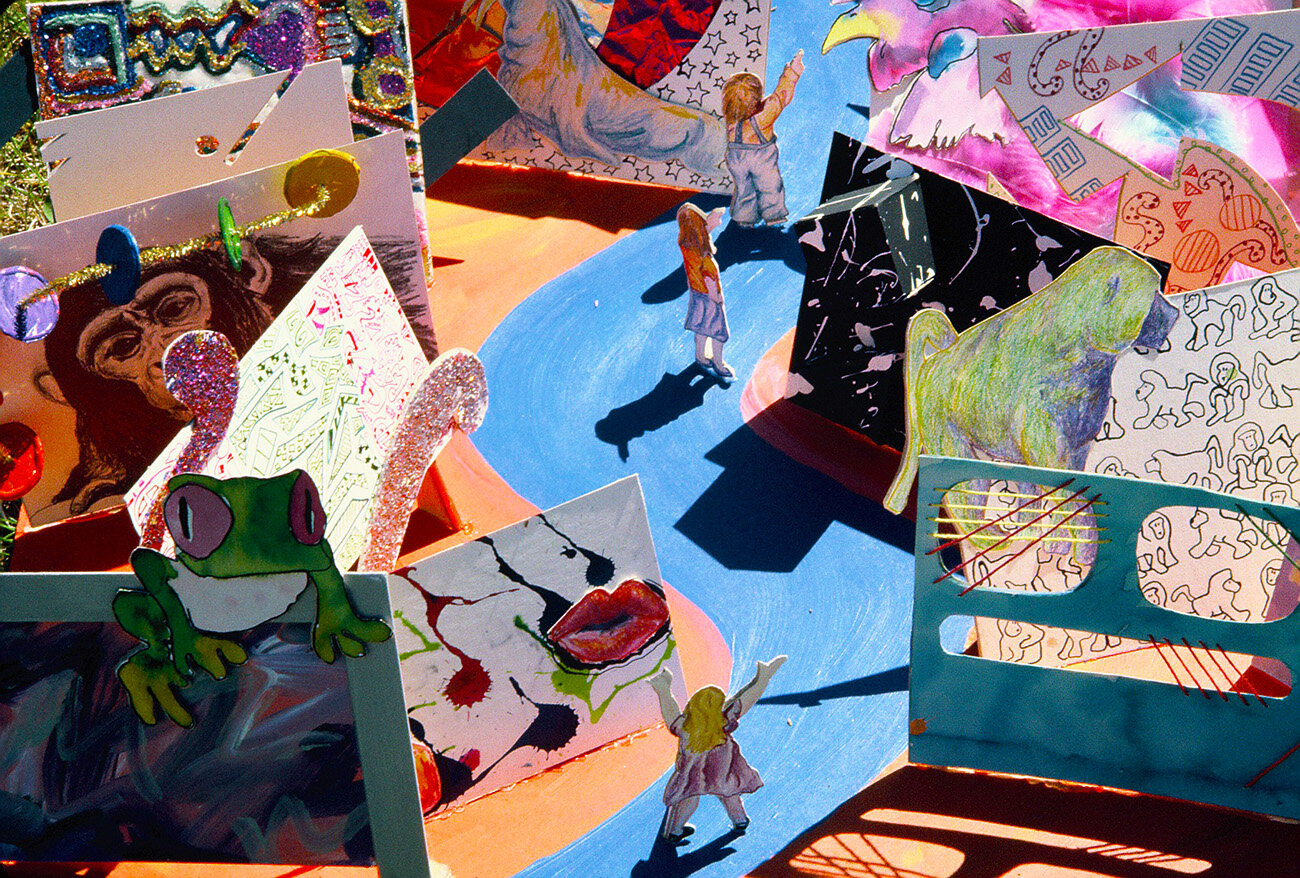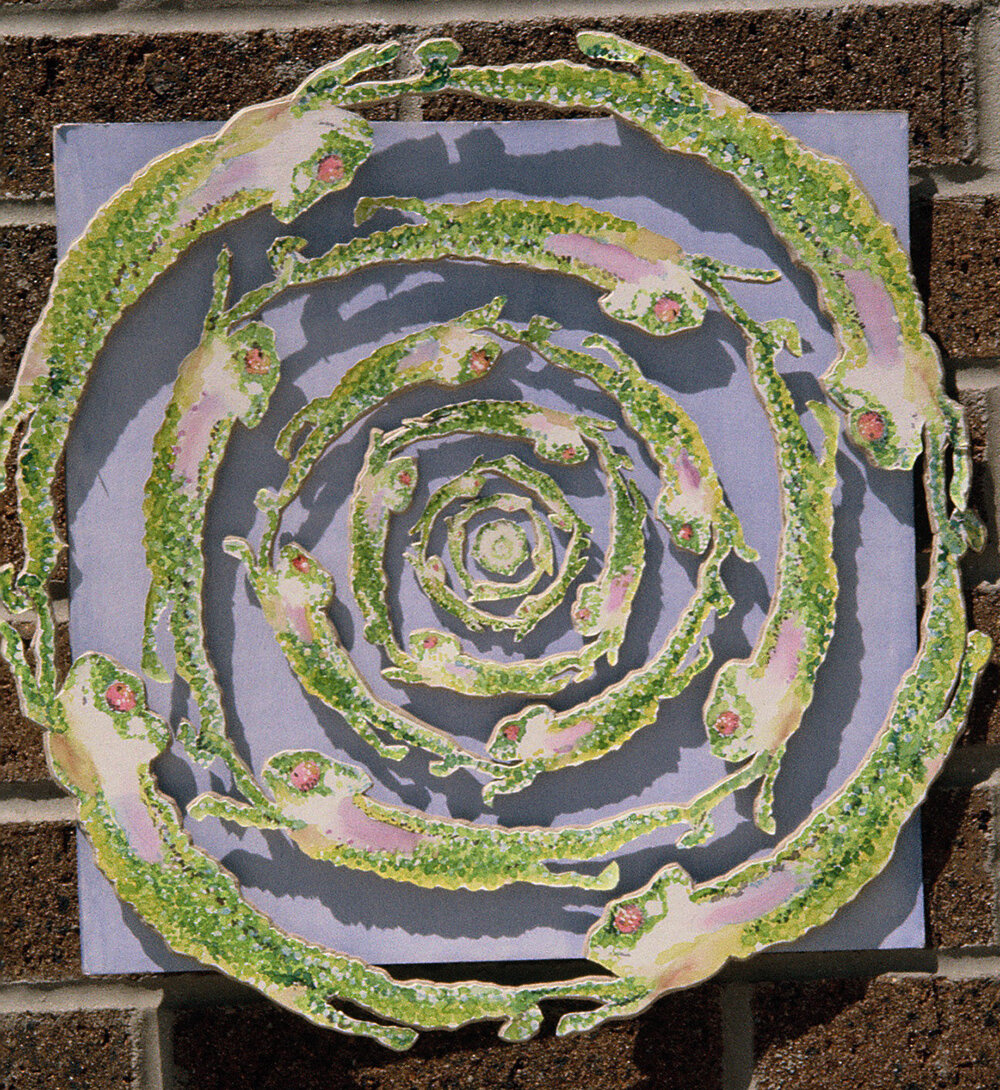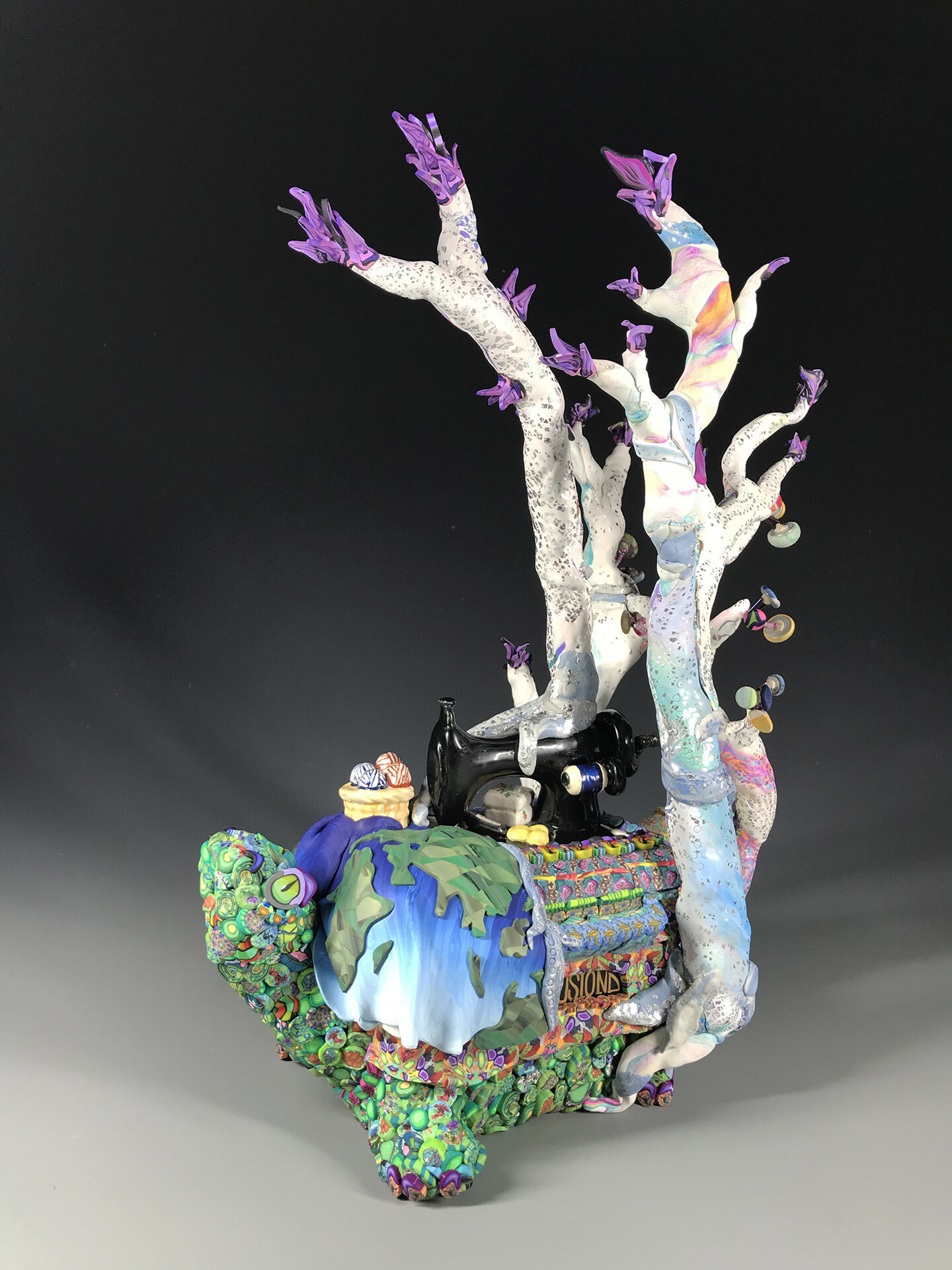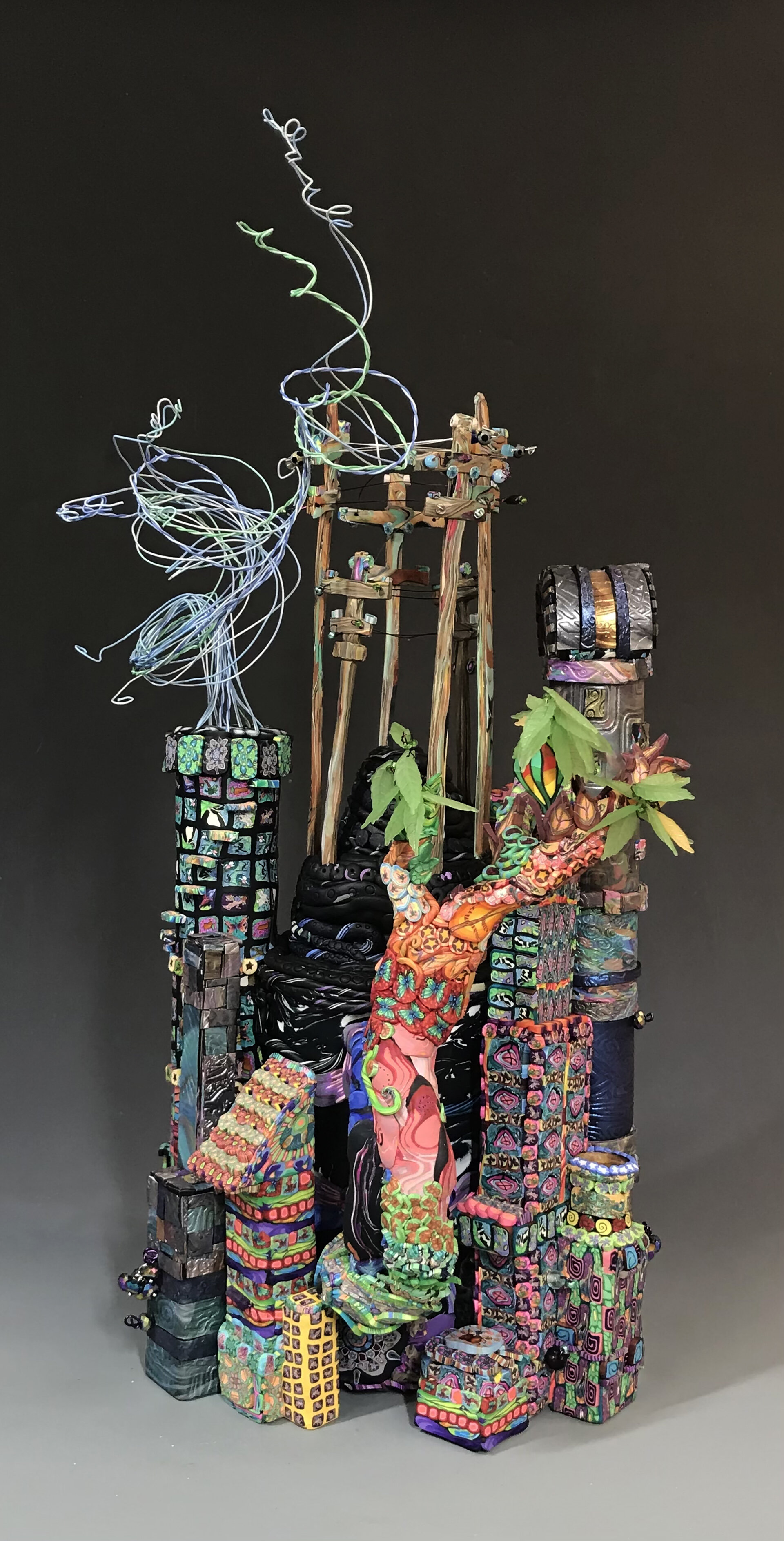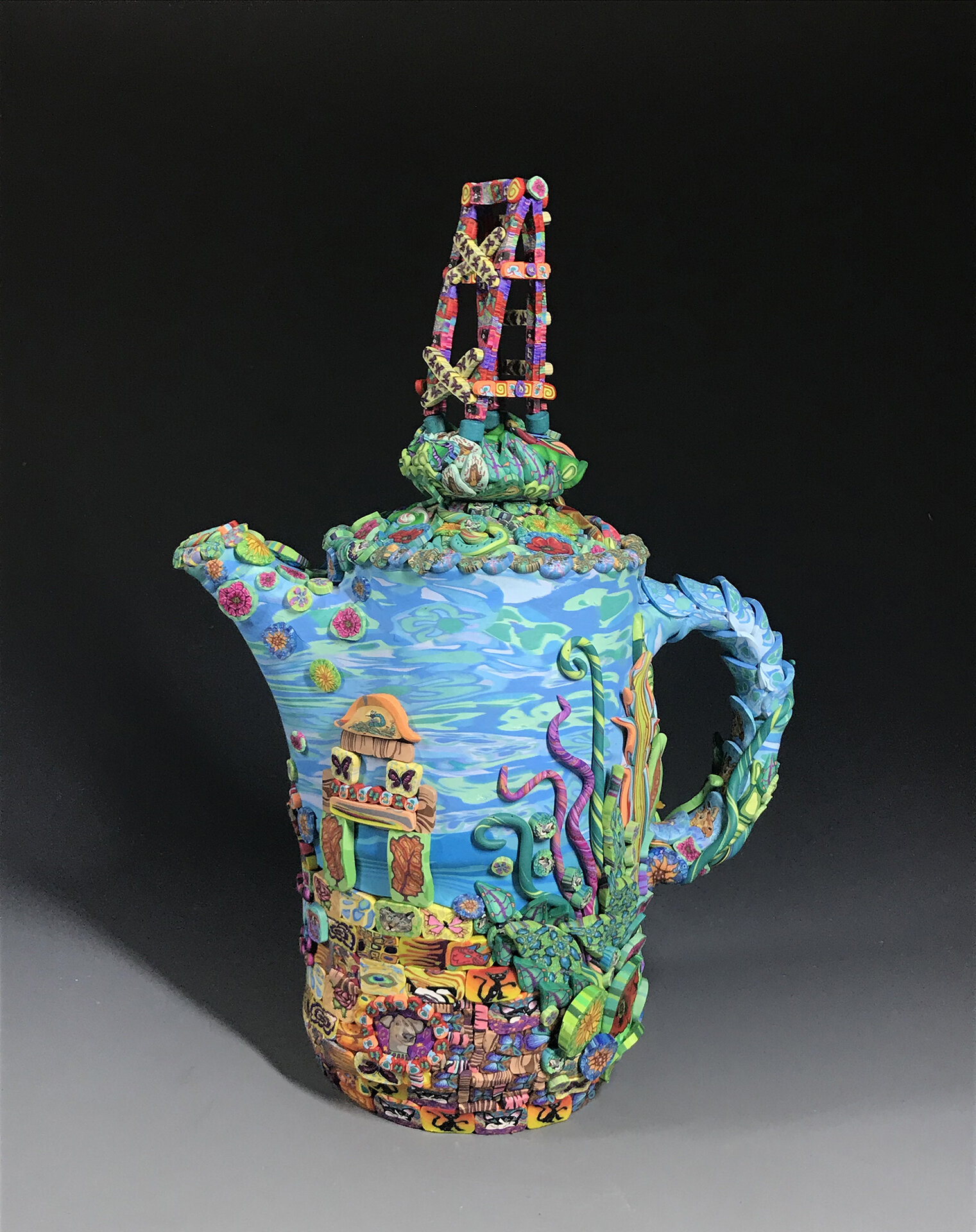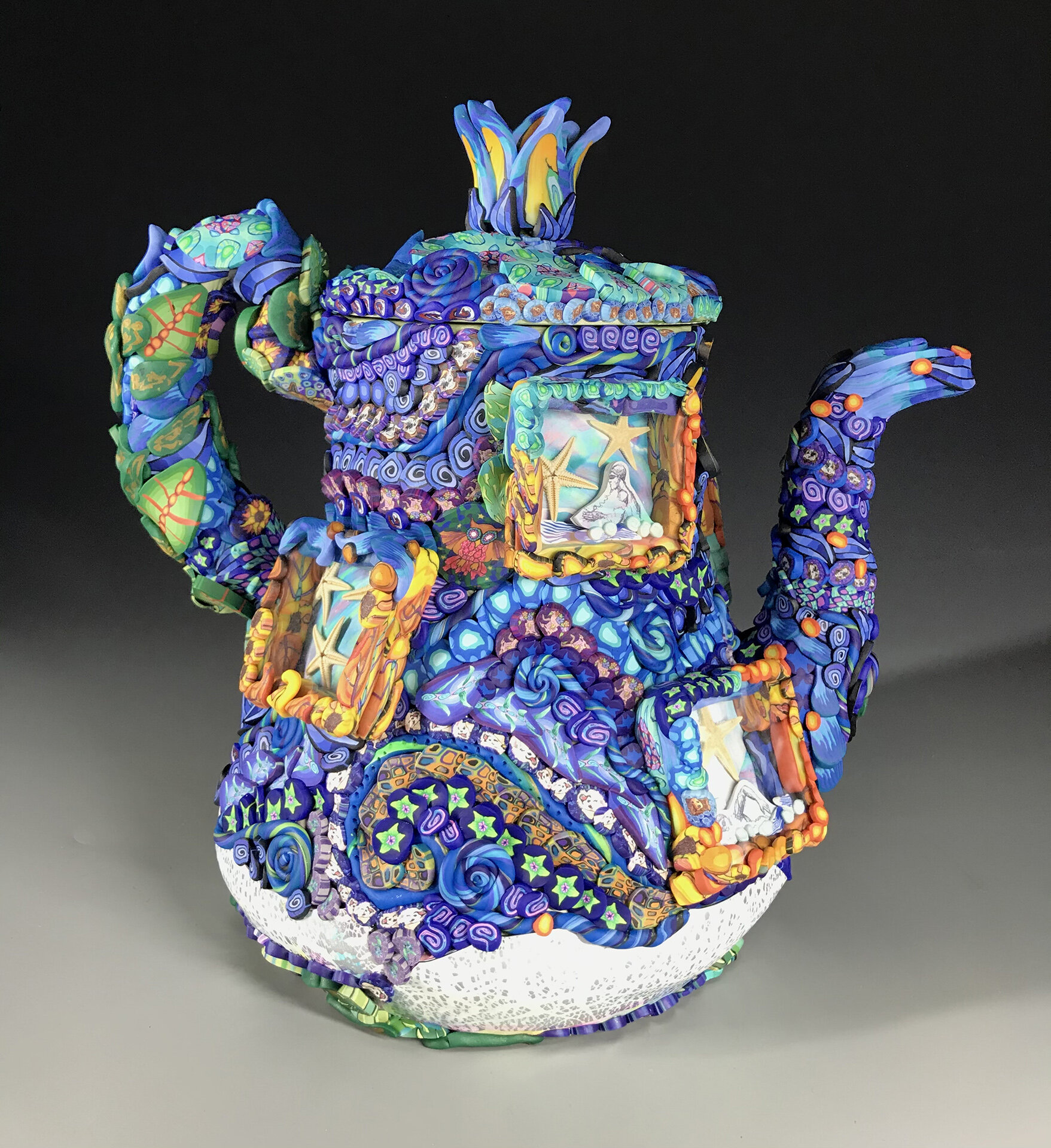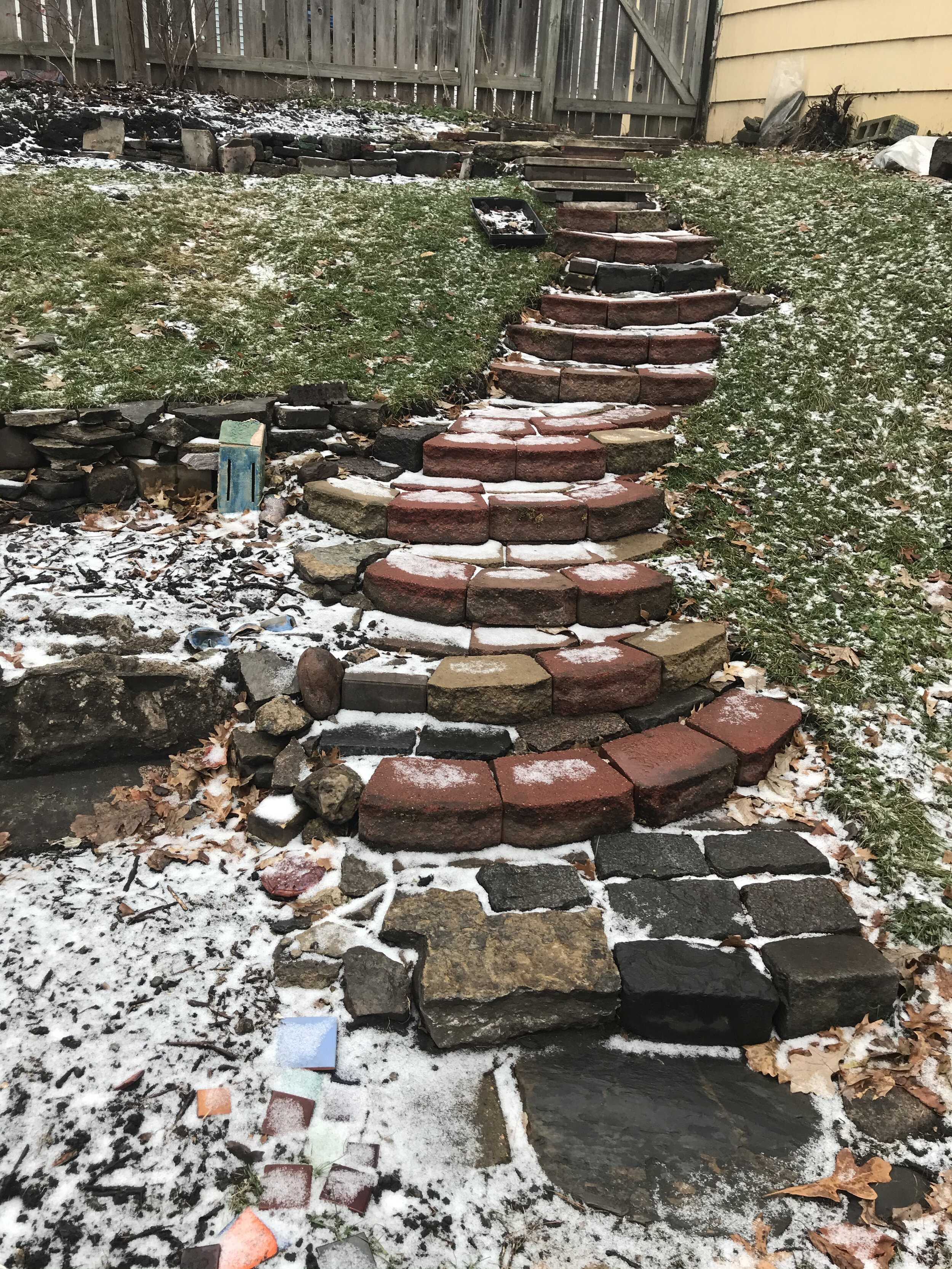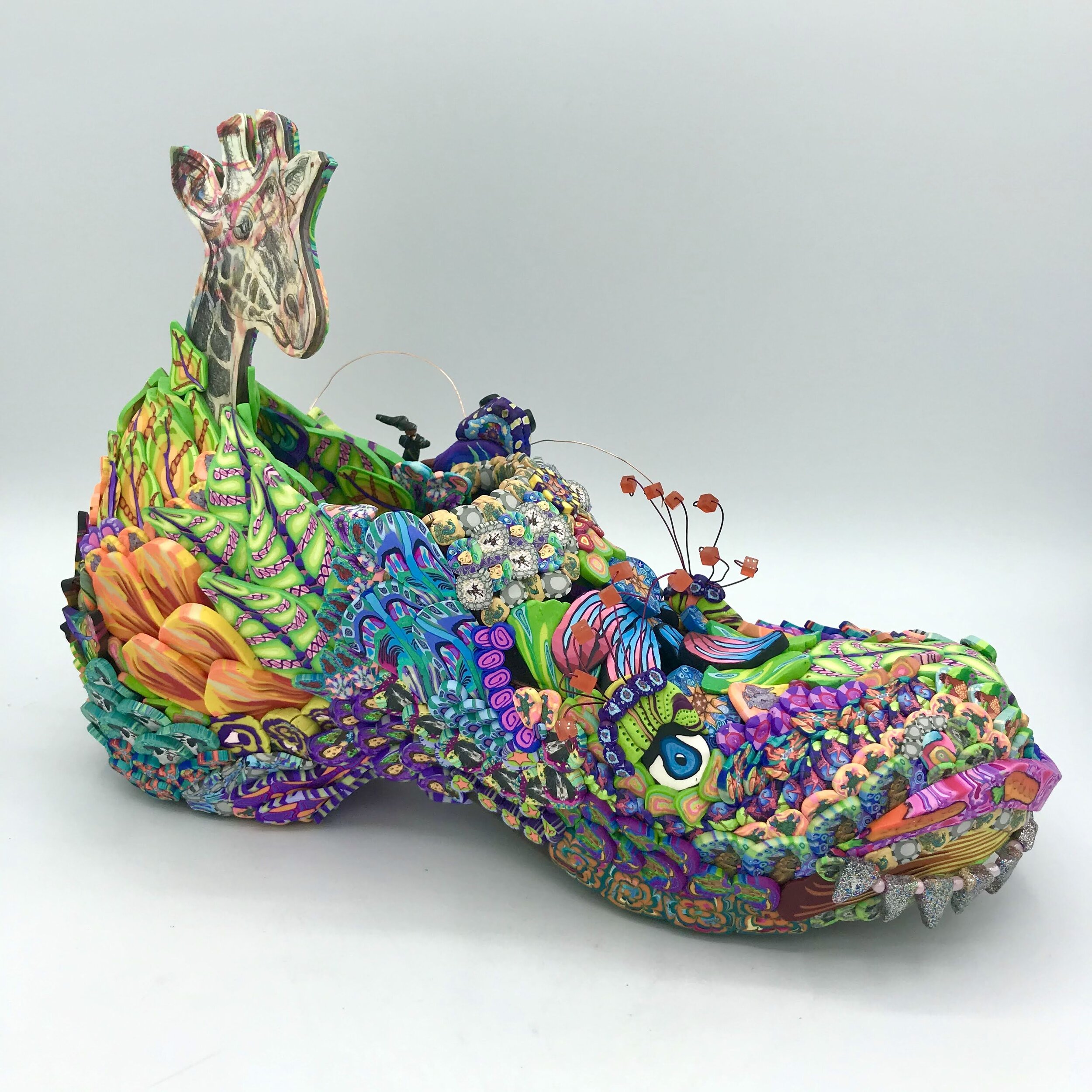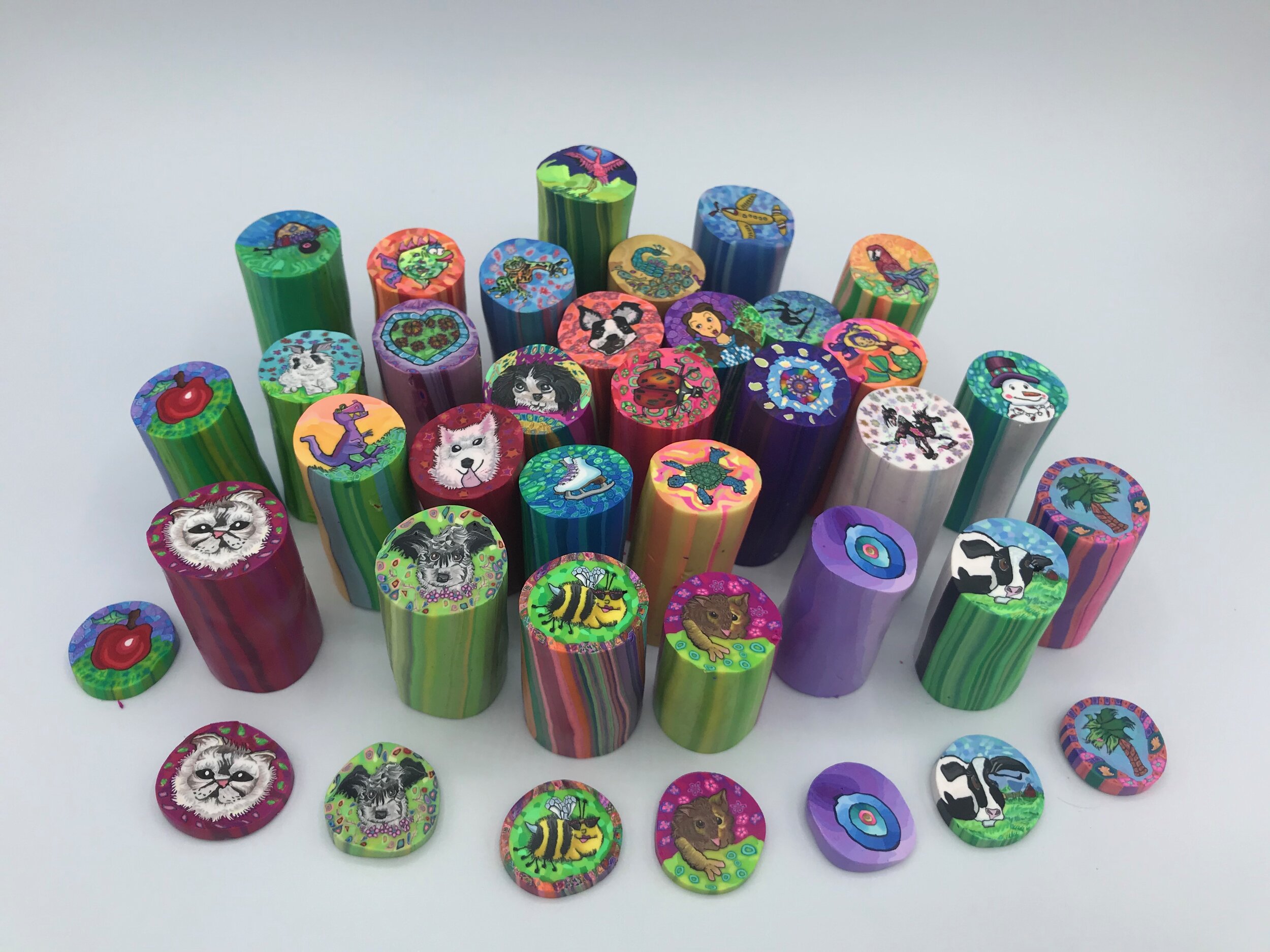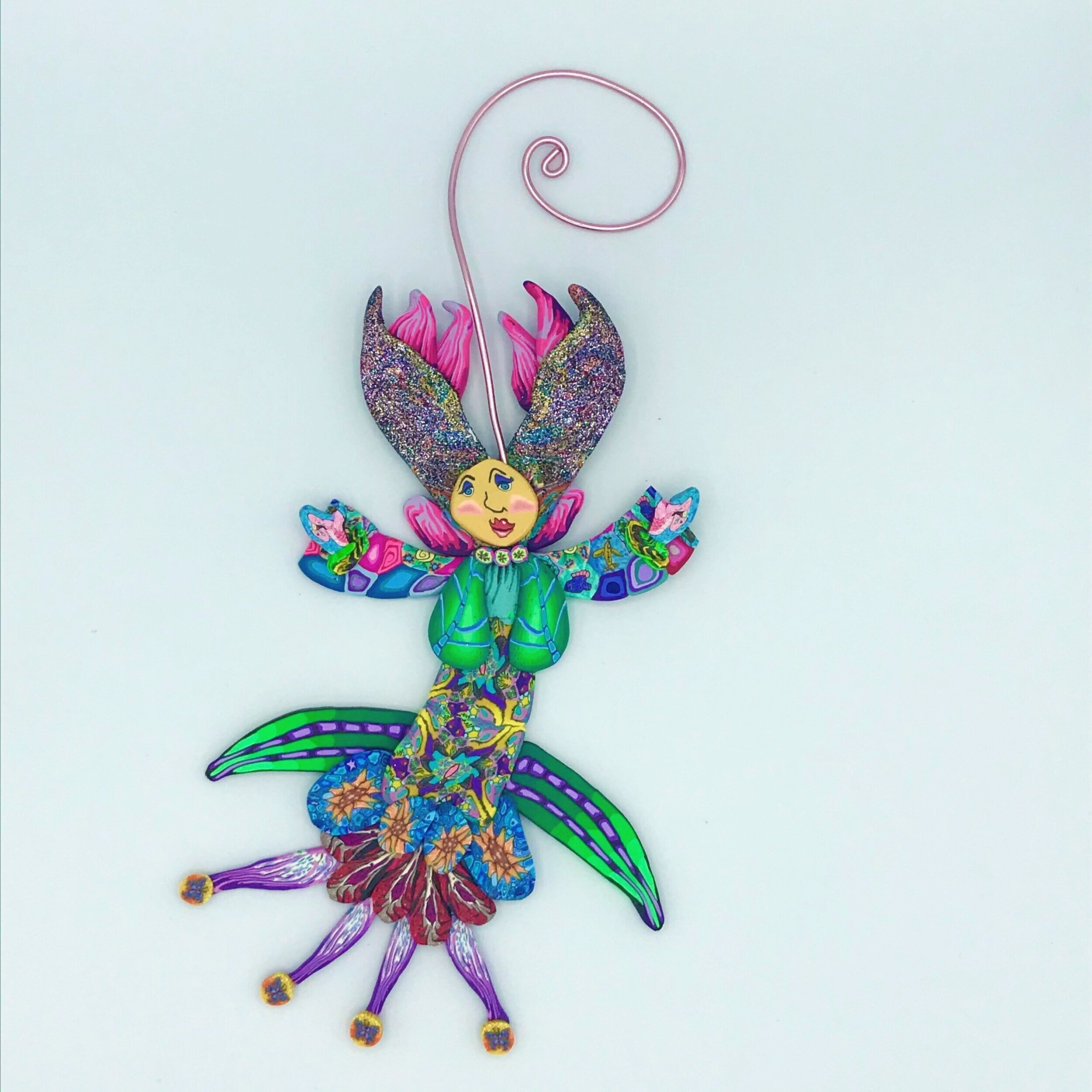When I received a Minnesota State Arts Board Creative Individuals Grant to study farms and make art about it I thought- “Oh no now I have to do it!” The thought of driving out to farm country to meet a farmer I didn’t know made me a little nervous! First off I wasn’t even sure how I would find a farmer that would want to talk to me but then I thought of my friend and supervisor at the University of Minnesota Nature Based Therapy Program- Jeannie Larson! She’s got to know a farmer or two!
Turns out she did! She connected me with the first two farmers I went to meet and talk to about their farms in Mora, MN. The first farmer I scheduled to meet with was Rye at Fresh Start Farm. I scheduled a date to connect by text and on a bright sunny April afternoon I drove north. I literally had piles of questions that I had collected at my most recent exhibit from my piece titled “Ask a Farmer” where people could write down a question to ask a farmer. It was interesting because most adults wanted to know things a long the lines of what is it like to be a farmer and most kids wanted to know about why it smelled or which animals the farmer had (particularly cats!). One also asked “Do you like Pandas?” It was obvious that those of us in the city really know very little about where our food comes from!
“Ask a Farmer” an interactive piece on display at my exhibit at the Hopkins Art Center in March 2025
My plan was to just take in the farm and ask as many questions as I could about the way the farm worked and how the farmer, Rye got into farming. Rye, (and his cat) greeted me as I rolled into his driveway and he was very curious about my project and happy to show me around his organic feed farm. He is the sole farmer on his farm doing everything from planting to customizing his machinery to marketing his products. It’s A Lot and I found it all to be very fascinating and inspirational.
The piece I created tells all about all the things I learned so let me just walk you through my piece part by part. The piece is about 6 feet long and 6 feet tall made of found objects and polymer clay. It’s titled “Cover Crop Collaboration” because the most amazing thing to me was how Rye has figured out the perfect pairings for his plants so that he doesn’t have to use pesticides or fertelizer and the plants help each other out in multiple ways.
“Cover Crop Colaboration” hanging at my gallery.
Rye grows three plants for the feed mix that he sells to organic farmers: Corn, Soybeans and Sunflowers. The first section of the piece shows the corn growing with buckwheat and sun hemp. You can see the roots growing together underground and the buckwheat is represented by a “Buckwheat Blanket” -sewn fabric buckwheat leaves on a small quilt to represent the cover crop. Sun Hemp is going to be his experiment this year and he’s adjusting his tractor so it will crimp the rows of buckwheat and sun hemp at the right time for planting the corn. It’s fascinating to me that there is so much experimentation in farming because each farm has unique soil and climate conditions.
The next section represents the soybean crop which he grows with white mustard. When I looked up soybean roots I learned about the nodules that grow on the roots to store nitrogen. They were super fun to make with polymer clay! I also learned about how soybeans are super nutritious and that’s why we grow so much to feed animals. To represent this concept I created clay soybeans with nutrient labels transferred onto them. I added a bedazzled microscope to this section to represent all the chemistry and science that goes into farming (most is honestly beyond my understanding- it all seems so magical!)
Close up of the White Mustard growing with the soy beans, I actually put real soy bean seeds in the soybeans!
Under this section I created a mixed media tractor from things like a cheese graiter, door lock, basket and doughnut mold. It’s also on a muffin tin which has sort of seed pods all around it. The tractor is pulling a roller crimper which is something I had never heard of but it is very useful when you are using cover crops.
The next section is filled with things that have to do with farming. I had fun going through my junk jars looking for different objects that symbolized both generally farming (like watches because timing is so important) and specific objects to this farm like the cat.
Below this section is a drawer all about water. As we all know keeping moisture in the ground and getting enough water is so important. Rye told me a story about how one year he tried growing winter rye with his crops and though it worked one year but then it totally failed the next because it uses a lot of moisture. He said that “Older biannual or perennial plant stands generally don’t want to allow an annual plant to grow up amongst it and challenge its offspring.” Which totally makes sense!
Most of the sections are made of drawers which were given to me by my friend Laura Burlis!
When he was telling me about this issue I had this vision of water being trapped by a bunch of vines or branches. I made the section on the very bottom to the right about this image and put the text he sent me describing this concept into the tangle of string.
The last section of plants is the sunflowers. He also grows these with buckwheat so I made another buckwheat blanket. I watched some videos about sunflowers and learned that their centers are actually made up of a bunch of tiny flowers. That made for a fun way for me to represent them in clay by using a bunch of different flower canes.
I made most of the sunflower petals with yellow clay and scrap clay using my technique called fluffiness.
You will also notice two silos that I created. Rye actually had smaller silos but the materials I had and the design of the piece lent me to make these larger silos. Just think of all the silos you see while driving around the country- do you ever wonder what’s in them? Well some might be empty (as I learned when I visited the next farmer) but Rye showed me one that still had piles of sunflower seeds leftover from the year before.
Some of the paper on the collage are from an old tractor catalog.
Meeting Rye and learning all about his farm was a unique experience! I am thankful for the grant I received because it is pushing me to make art about something I have not studied before but am finding endlessly fascinating. It’s giving me a chance to share this experience with people when I show my work. I hope that it becomes an interesting visual lesson that sticks with the viewer especially when they are enjoying their food needed a farm like Ryes to make it to their plate.
(BTW if you know any farmers that you think I should meet please message me! I’m definitely interested in all kinds of farms!)
Layl McDill is a fiscal year 2025 recipient of a Creative Individuals grant from the Minnesota State Arts Board. This activity is made possible by the voters of Minnesota through a grant from the Grantee must acknowledge this Minnesota State Arts Board grant.
Minnesota State Arts Board, thanks to a legislative appropriation from the arts and cultural heritage fund.

































